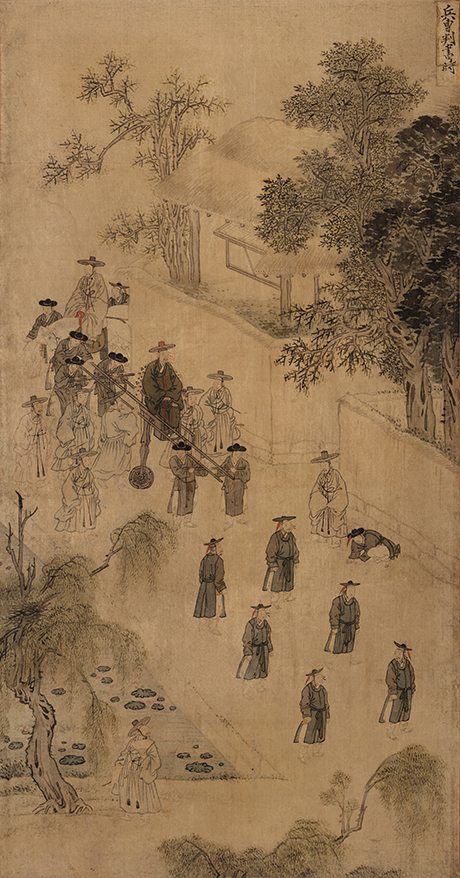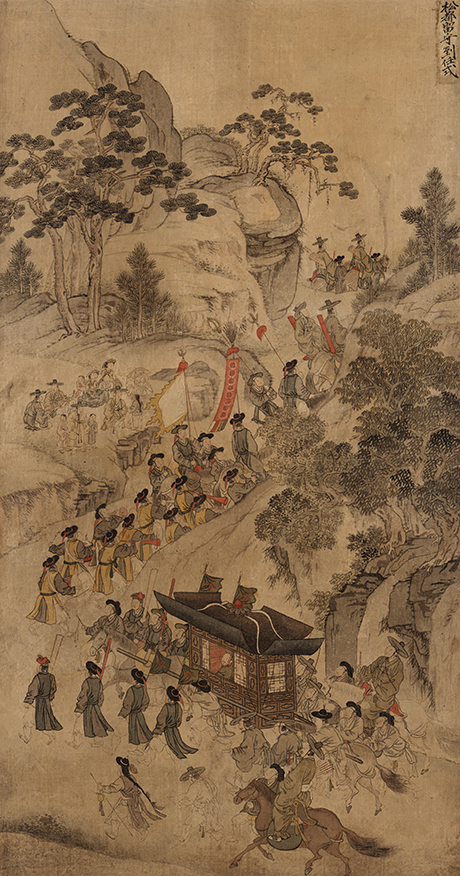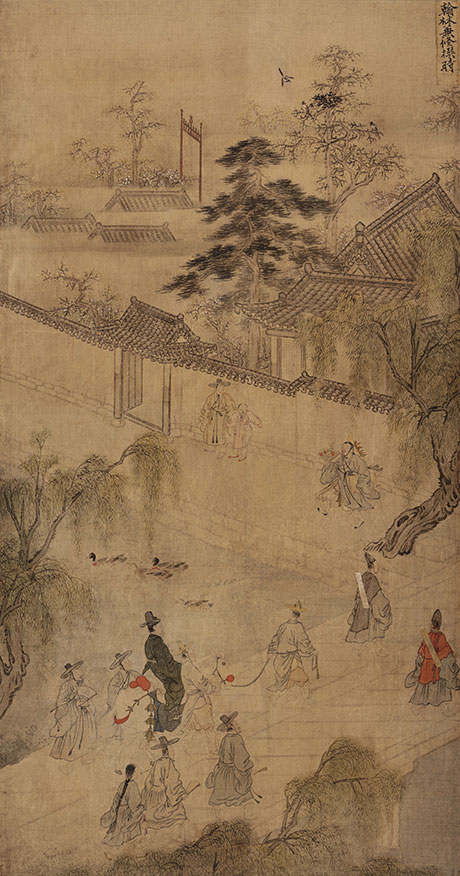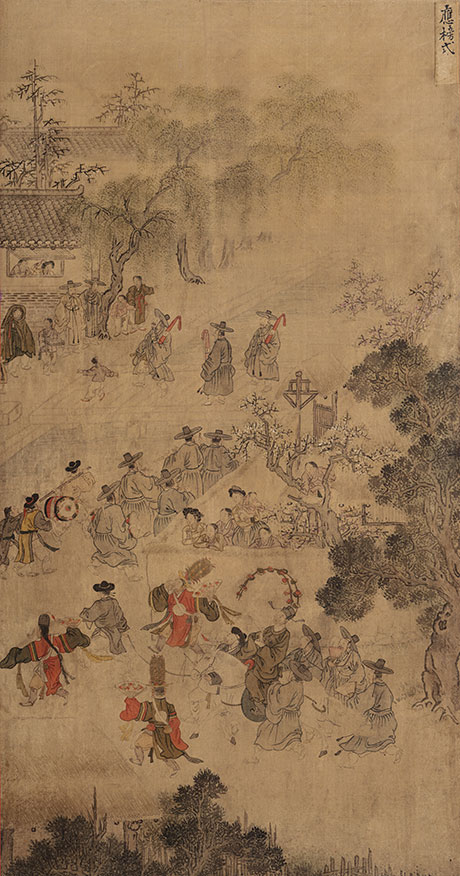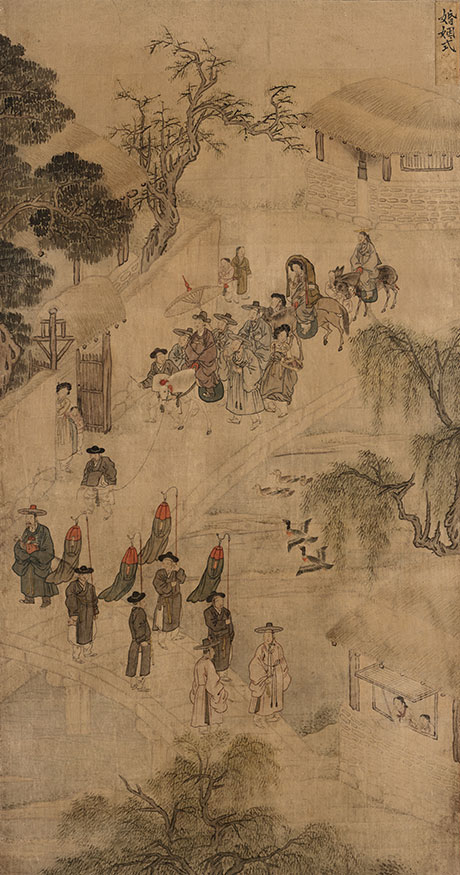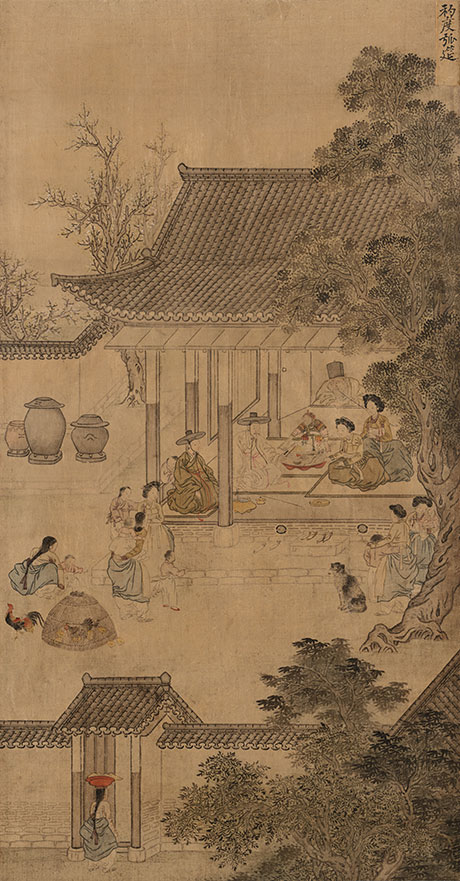The Occasion Celebrating Sixtieth Anniversary
- 1. 60th Birthday: the 10 heavenly stems combined with the twelve earth branches mark the 60th anniversary. This event is the celebration of the completion of the traditional sexagenarian cycle (five cycles of the zodiac’s 12 years) and the return to the start of another.
- 2. 60th Wedding Anniversary: The event to mark the sixtieth wedding anniversary. Since people marry in their 10s, if the couple celebrate this event, it implies that both of them are alive when reaching their 70-80s.
- 3. 60th Anniversary of Winning the State Examination: The event to celebrate the sixtieth anniversary of winning the State Examination. Since people win the State Examination in their 30s on average in Joseon, this event is such a joyous occasion in their 90s.
It is rare to enter into matrimony and live together for 60 years even these days. As such, celebrating the sixtieth wedding anniversary in the Joseon period when the average life expectancy was less than 60 years is a remarkable lifetime occasion. The elderly couple wears identical to those for their original ceremony, to carry out the particulars of the wedding ceremony. Their descendants accompany their elderly parents, host the event, guide the bridegroom by holding a goose, and help the bride adorn herself by serving as their attendants. The base and the folding screen behind the banquet table are filled with peonies, a flower that symbolizes wealth and honor, to display affluence and harmony from the large family gathering, consisting of the children and grandchildren.
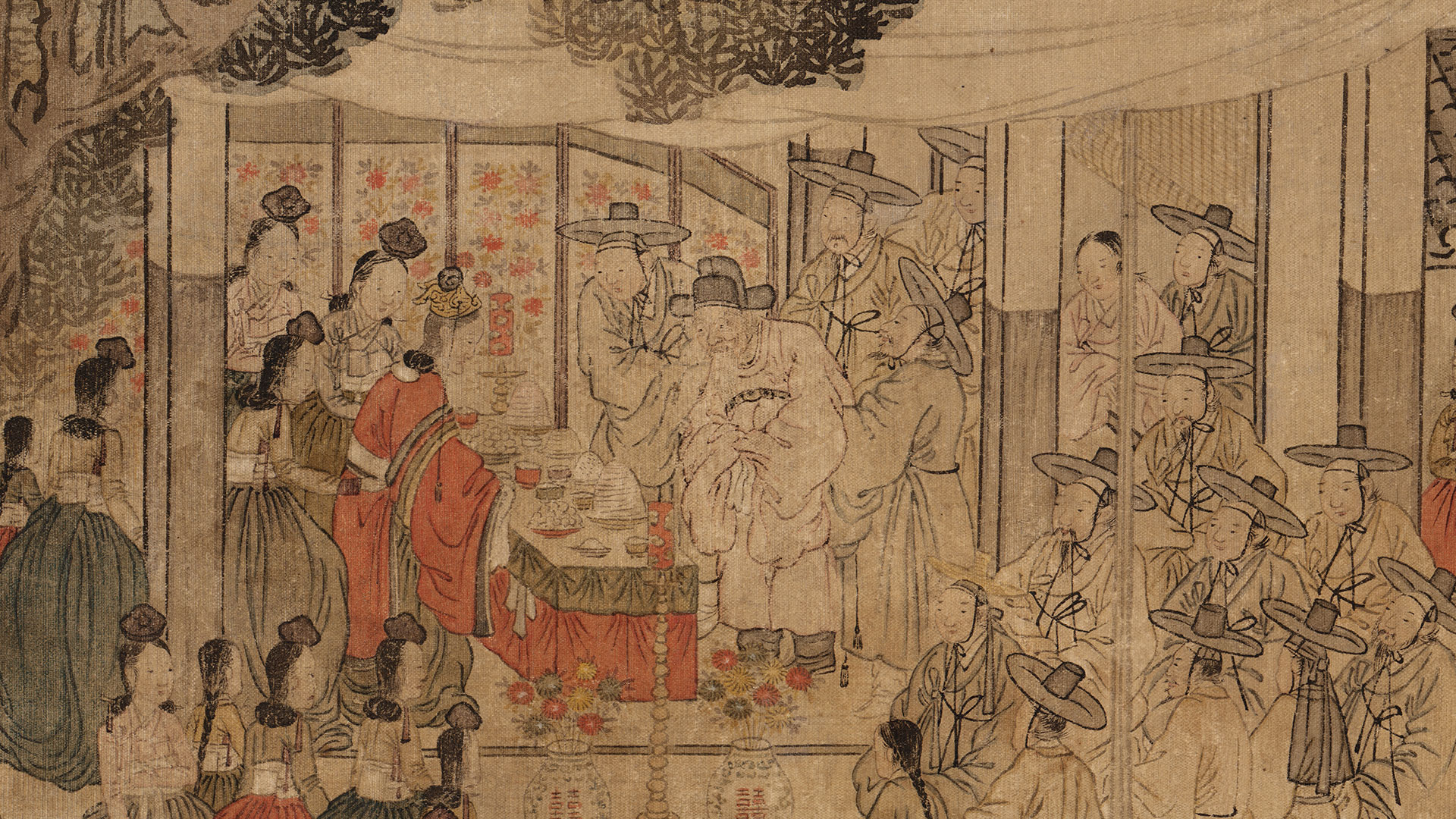
The Occasion Celebrating Sixtieth Anniversary
- 1. 60th Birthday: the 10 heavenly stems combined with the twelve earth branches mark the 60th anniversary. This event is the celebration of the completion of the traditional sexagenarian cycle (five cycles of the zodiac’s 12 years) and the return to the start of another.
- 2. 60th Wedding Anniversary: The event to mark the sixtieth wedding anniversary. Since people marry in their 10s, if the couple celebrate this event, it implies that both of them are alive when reaching their 70-80s.
- 3. 60th Anniversary of Winning the State Examination: The event to celebrate the sixtieth anniversary of winning the State Examination. Since people win the State Examination in their 30s on average in Joseon, this event is such a joyous occasion in their 90s.
The elderly couple, who dress up as if they were at their original wedding ceremony, stand encountering together amid the red candle lights and the banquet table with the foods for the feast. They perform the ritual of drinking alcohol in glasses or gourd dippers as accompanied with their children.
The Rank of Positions
| Position | Rank | Scene | Title |
|---|---|---|---|
| High-level Officials (Senior First – Higher Senior Third) |
Senior / Junior First | The 7th Panel | Senior First Official |
| Senior Second | The 6th Panel | Minister | |
| Junior Second | The 5th Panel | Magistrate | |
| Senior / Junior Third | - | - | |
| Low-level Officials (Lower Senior Third - Junior Ninth) |
Senior / Junior Fourth | - | - |
| Senior / Junior Fifth | The 4th Panel | Senior Fifth Official in the Office of Special Advisors | |
| Senior / Junior Sixth | The 3rd Panel | The winner in first place of the State Examination | |
| Senior / Junior Seventh | - | - | |
| Senior / Junior Eighth | - | - | |
| Senior / Junior Ninth | - | - |
The Senior First officials, the highest rank of the governmental posts of the Joseon dynasty, They hold tremendous power to control the State Council, the highest deliberative body of the Joseon dynasty, and to collect opinions of the major six public offices. The post is the highest rank for the governmental officials of Joseon and as such, comes with the most important duties in politics, administration and the military authority of Joseon. This painting depicts the procession of the main figure, the Left State Councilor, one of the Senior First Officials, after work. From the crescent in the sky and an official who guides his path with a torch, it is assumed that this is the scene in the night. The scene of the Left State Councilor who sits on the four-bearer sedan chair, which is permitted for those at the Junior First rank or higher, under the fan in the shape of a plantain for the high-rank officials, with two attendants who guides the high-rank officials by announcing the coming of them to the people, illustrates the dignity of the highest ranking official of the Joseon dynasty.
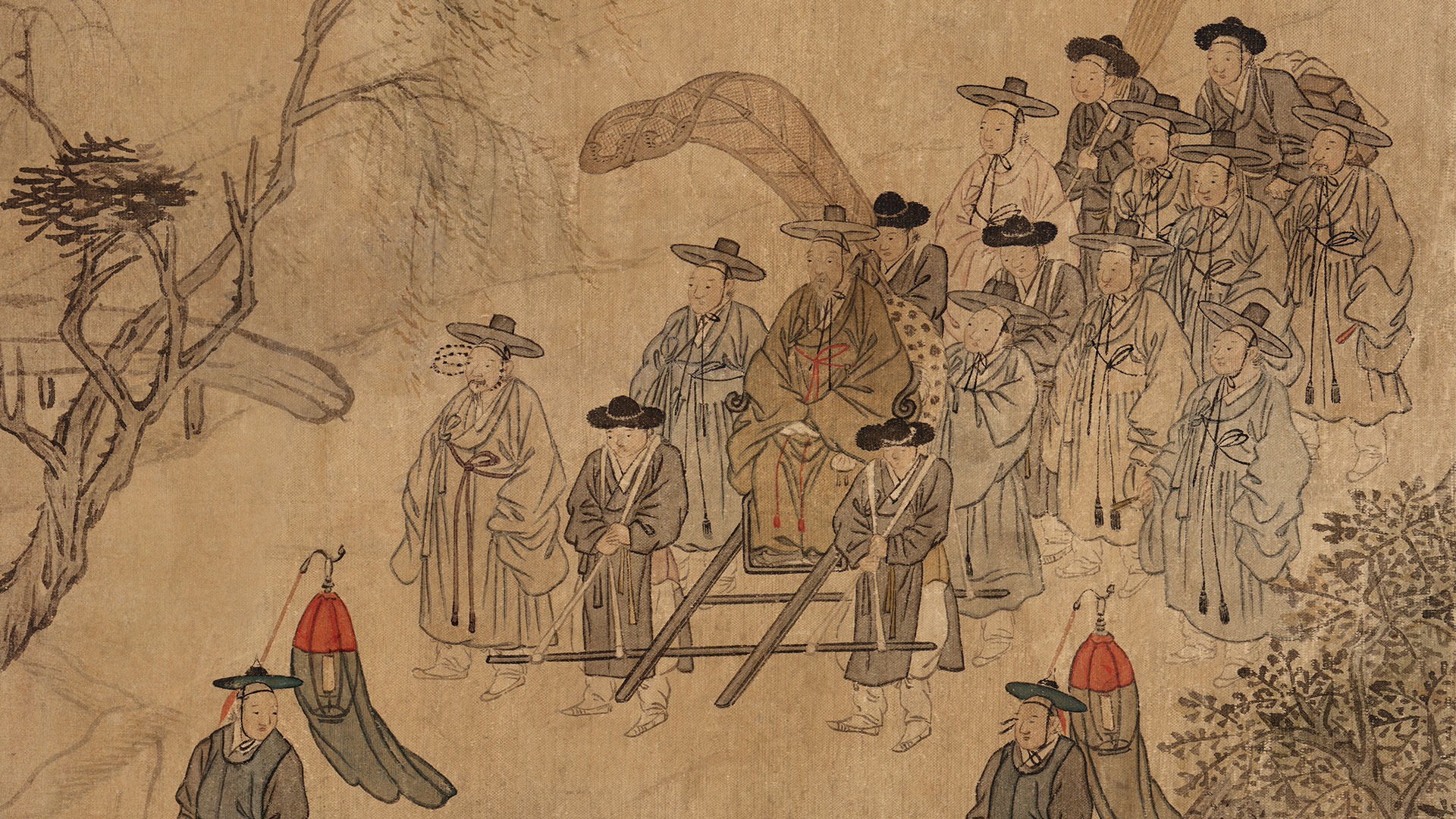
The Rank of Positions
| Position | Rank | Scene | Title |
|---|---|---|---|
| High-level Officials (Senior First – Higher Senior Third) |
Senior / Junior First | The 7th Panel | Senior First Official |
| Senior Second | The 6th Panel | Minister | |
| Junior Second | The 5th Panel | Magistrate | |
| Senior / Junior Third | - | - | |
| Low-level Officials (Lower Senior Third - Junior Ninth) |
Senior / Junior Fourth | - | - |
| Senior / Junior Fifth | The 4th Panel | Senior Fifth Official in the Office of Special Advisors | |
| Senior / Junior Sixth | The 3rd Panel | The winner in first place of the State Examination | |
| Senior / Junior Seventh | - | - | |
| Senior / Junior Eighth | - | - | |
| Senior / Junior Ninth | - | - |
The main figure sits on the sedan chair with the tiger skin print rug under the fan in the shape of a plantain. This sedan chair was permitted only for the officials at the Junior First or higher.
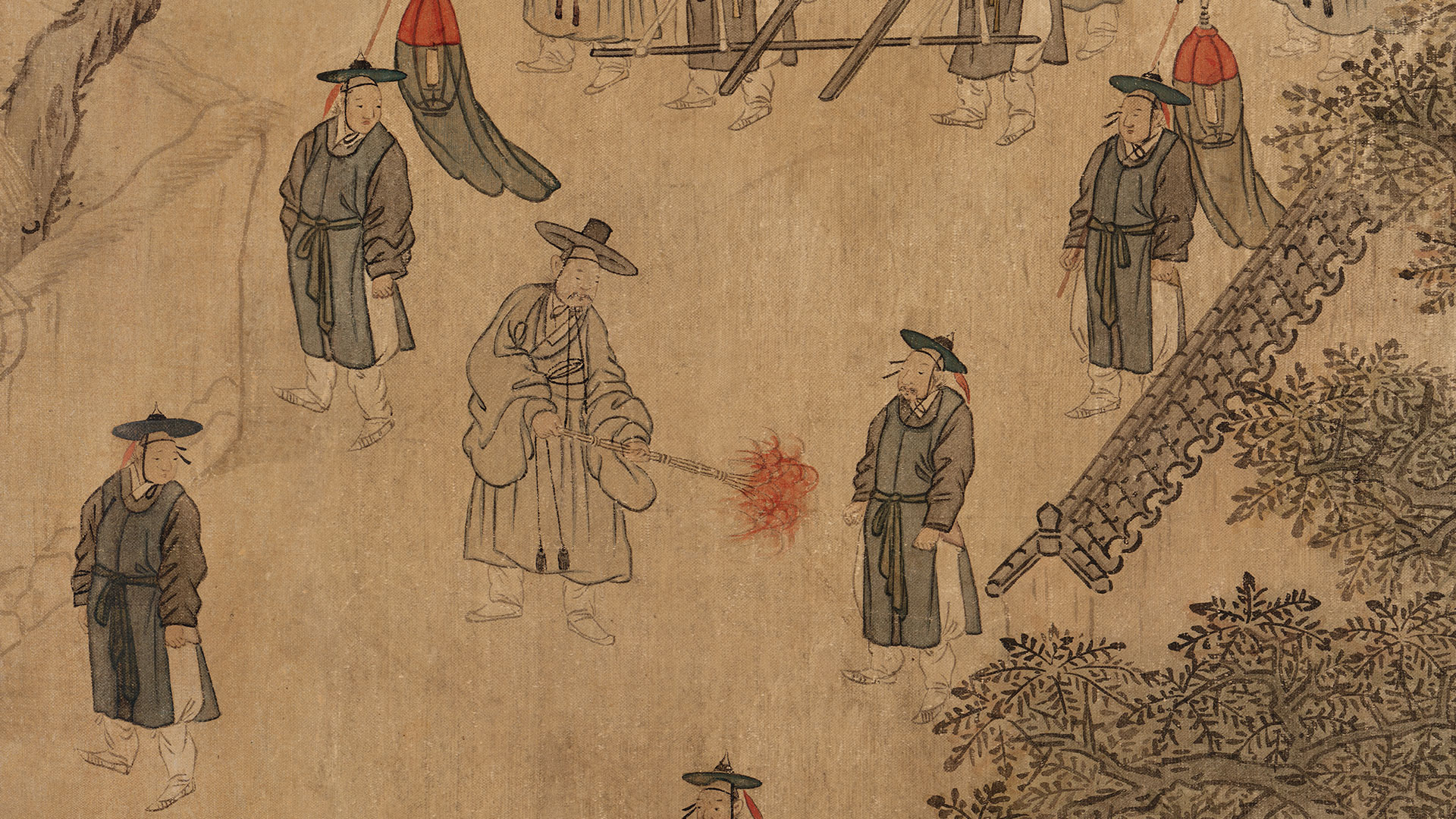
The Rank of Positions
| Position | Rank | Scene | Title |
|---|---|---|---|
| High-level Officials (Senior First – Higher Senior Third) |
Senior / Junior First | The 7th Panel | Senior First Official |
| Senior Second | The 6th Panel | Minister | |
| Junior Second | The 5th Panel | Magistrate | |
| Senior / Junior Third | - | - | |
| Low-level Officials (Lower Senior Third - Junior Ninth) |
Senior / Junior Fourth | - | - |
| Senior / Junior Fifth | The 4th Panel | Senior Fifth Official in the Office of Special Advisors | |
| Senior / Junior Sixth | The 3rd Panel | The winner in first place of the State Examination | |
| Senior / Junior Seventh | - | - | |
| Senior / Junior Eighth | - | - | |
| Senior / Junior Ninth | - | - |
They stand holding torches in the street. In Joseon, the rights of the use of torches differ from the public posts. Considering that these people hold traditional Korean lanterns, this official is assumed to return home after finishing his work.
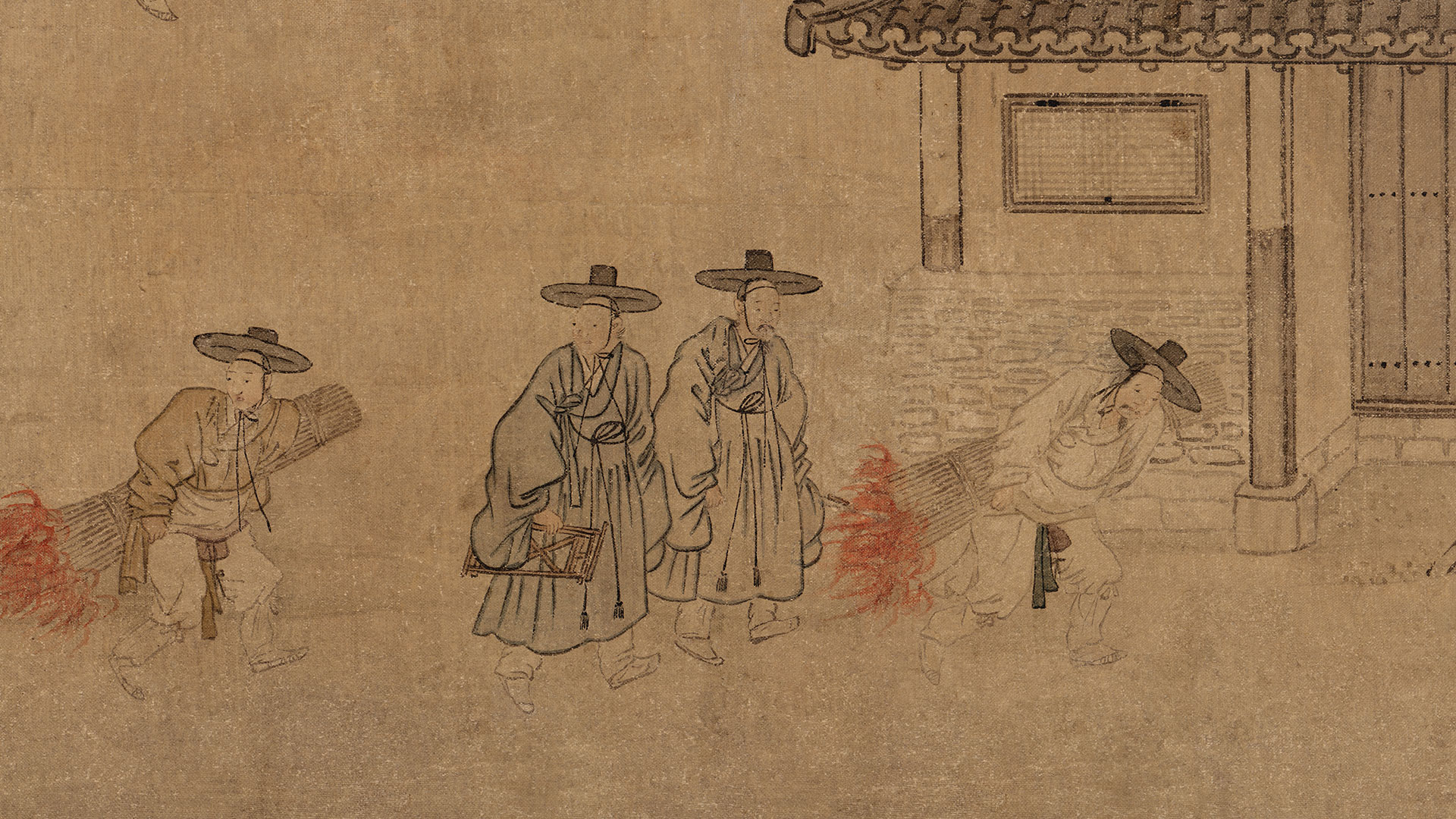
The Rank of Positions
| Position | Rank | Scene | Title |
|---|---|---|---|
| High-level Officials (Senior First – Higher Senior Third) |
Senior / Junior First | The 7th Panel | Senior First Official |
| Senior Second | The 6th Panel | Minister | |
| Junior Second | The 5th Panel | Magistrate | |
| Senior / Junior Third | - | - | |
| Low-level Officials (Lower Senior Third - Junior Ninth) |
Senior / Junior Fourth | - | - |
| Senior / Junior Fifth | The 4th Panel | Senior Fifth Official in the Office of Special Advisors | |
| Senior / Junior Sixth | The 3rd Panel | The winner in first place of the State Examination | |
| Senior / Junior Seventh | - | - | |
| Senior / Junior Eighth | - | - | |
| Senior / Junior Ninth | - | - |
Two people lead the procession at the very front. The high-level officials at the Senior Third or higher can keep an attendant. They carry the cover for the sedan chair and the leathered sedan chair, respectively.
The Rank of Positions
| Position | Rank | Scene | Title |
|---|---|---|---|
| High-level Officials (Senior First – Higher Senior Third) |
Senior / Junior First | The 7th Panel | Senior First Official |
| Senior Second | The 6th Panel | Minister | |
| Junior Second | The 5th Panel | Magistrate | |
| Senior / Junior Third | - | - | |
| Low-level Officials (Lower Senior Third - Junior Ninth) |
Senior / Junior Fourth | - | - |
| Senior / Junior Fifth | The 4th Panel | Senior Fifth Official in the Office of Special Advisors | |
| Senior / Junior Sixth | The 3rd Panel | The winner in first place of the State Examination | |
| Senior / Junior Seventh | - | - | |
| Senior / Junior Eighth | - | - | |
| Senior / Junior Ninth | - | - |
A minister, a high-level official at senior second rank, controls the six major governmental agencies. Of them, the minister of defence is the leader who supervises the military duties of the Joseon dynasty. The high–level officials in the Joseon dynasty, ranging from the senior first to the senior third in the rank of position, hold exclusive powers for the main authorities such as legislation, military, and human resource affairs. This painting depicts the procession of the main figure who is the minister of defence. The scene of his sitting on a sedan chair in the shape of wagon that is only permitted for the posts at the junior second or higher and a number of attendants enable viewers to presume his dignity. Especially, the attitudes to express respect to the officials at a high level contrast with the scholar-officials who step aside and nod congenially and the officials at a low level who kneel down.
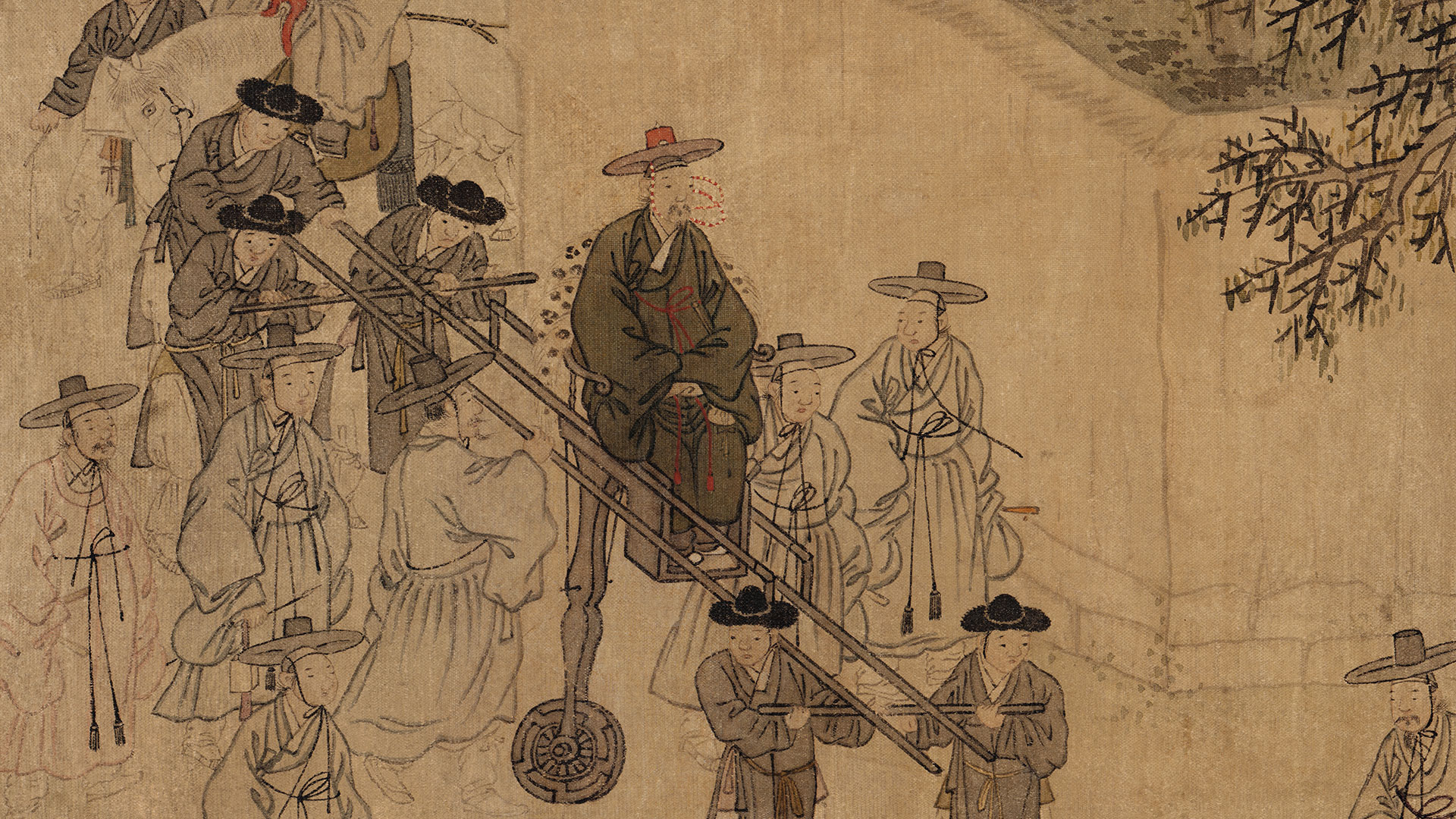
The Rank of Positions
| Position | Rank | Scene | Title |
|---|---|---|---|
| High-level Officials (Senior First – Higher Senior Third) |
Senior / Junior First | The 7th Panel | Senior First Official |
| Senior Second | The 6th Panel | Minister | |
| Junior Second | The 5th Panel | Magistrate | |
| Senior / Junior Third | - | - | |
| Low-level Officials (Lower Senior Third - Junior Ninth) |
Senior / Junior Fourth | - | - |
| Senior / Junior Fifth | The 4th Panel | Senior Fifth Official in the Office of Special Advisors | |
| Senior / Junior Sixth | The 3rd Panel | The winner in first place of the State Examination | |
| Senior / Junior Seventh | - | - | |
| Senior / Junior Eighth | - | - | |
| Senior / Junior Ninth | - | - |
The main figure of this painting wears navy clothes and a red hat for civil and military officials and sits on the sedan chair with the mat of the tiger skin print. This sedan chair is only permitted for the officials at the Junior Second or higher, which runs with one wheel with the high height. The four servants, two each for the front and rear, push the sedan chair to go ahead.
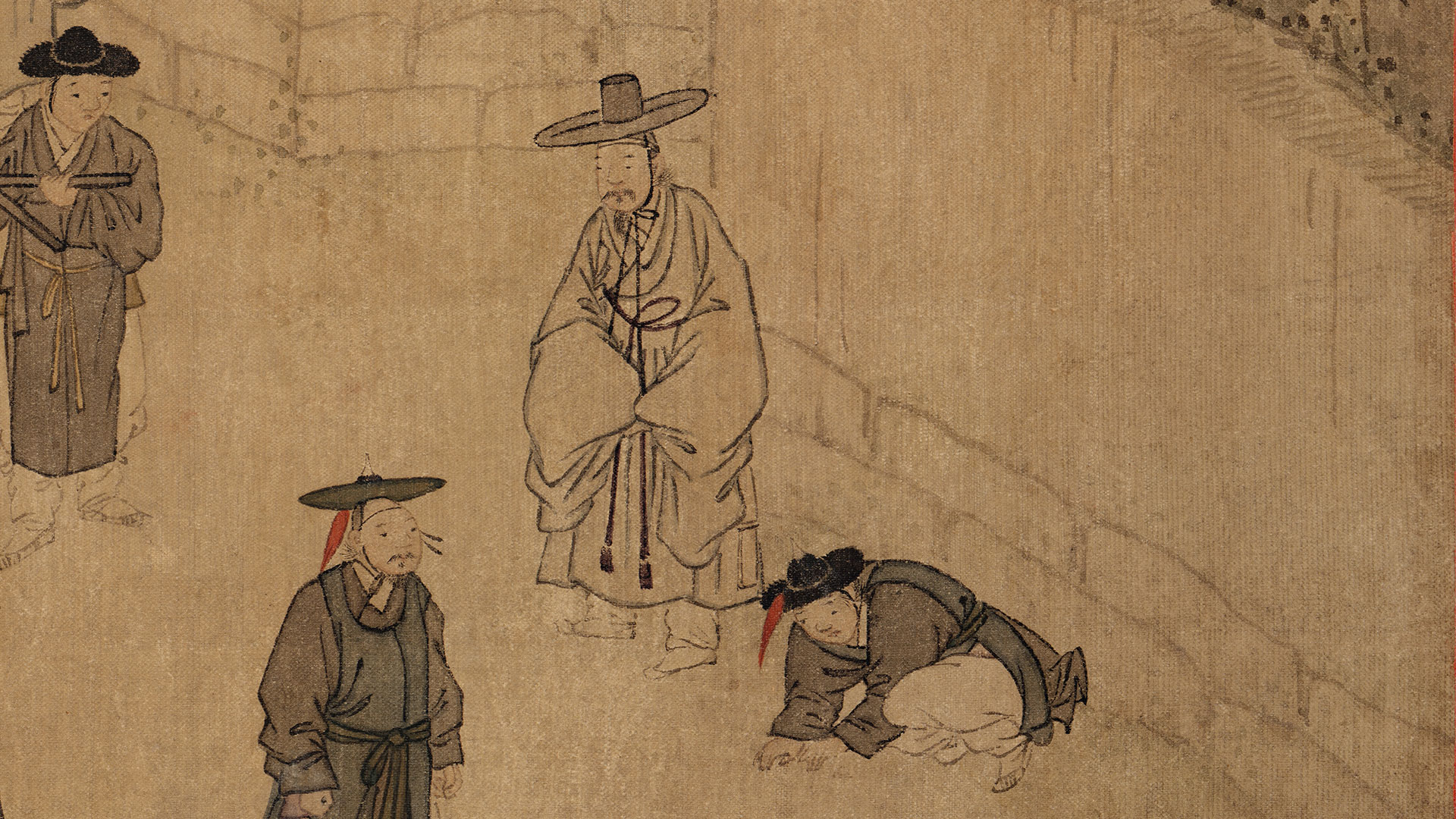
The Rank of Positions
| Position | Rank | Scene | Title |
|---|---|---|---|
| High-level Officials (Senior First – Higher Senior Third) |
Senior / Junior First | The 7th Panel | Senior First Official |
| Senior Second | The 6th Panel | Minister | |
| Junior Second | The 5th Panel | Magistrate | |
| Senior / Junior Third | - | - | |
| Low-level Officials (Lower Senior Third - Junior Ninth) |
Senior / Junior Fourth | - | - |
| Senior / Junior Fifth | The 4th Panel | Senior Fifth Official in the Office of Special Advisors | |
| Senior / Junior Sixth | The 3rd Panel | The winner in first place of the State Examination | |
| Senior / Junior Seventh | - | - | |
| Senior / Junior Eighth | - | - | |
| Senior / Junior Ninth | - | - |
At the procession of the Minister of Defence at the Senior Second rank, one scholar and a patrol halt and express respect to him. The attitude of the scholar, who only nods, contrasts with that of the patrol who bends down.
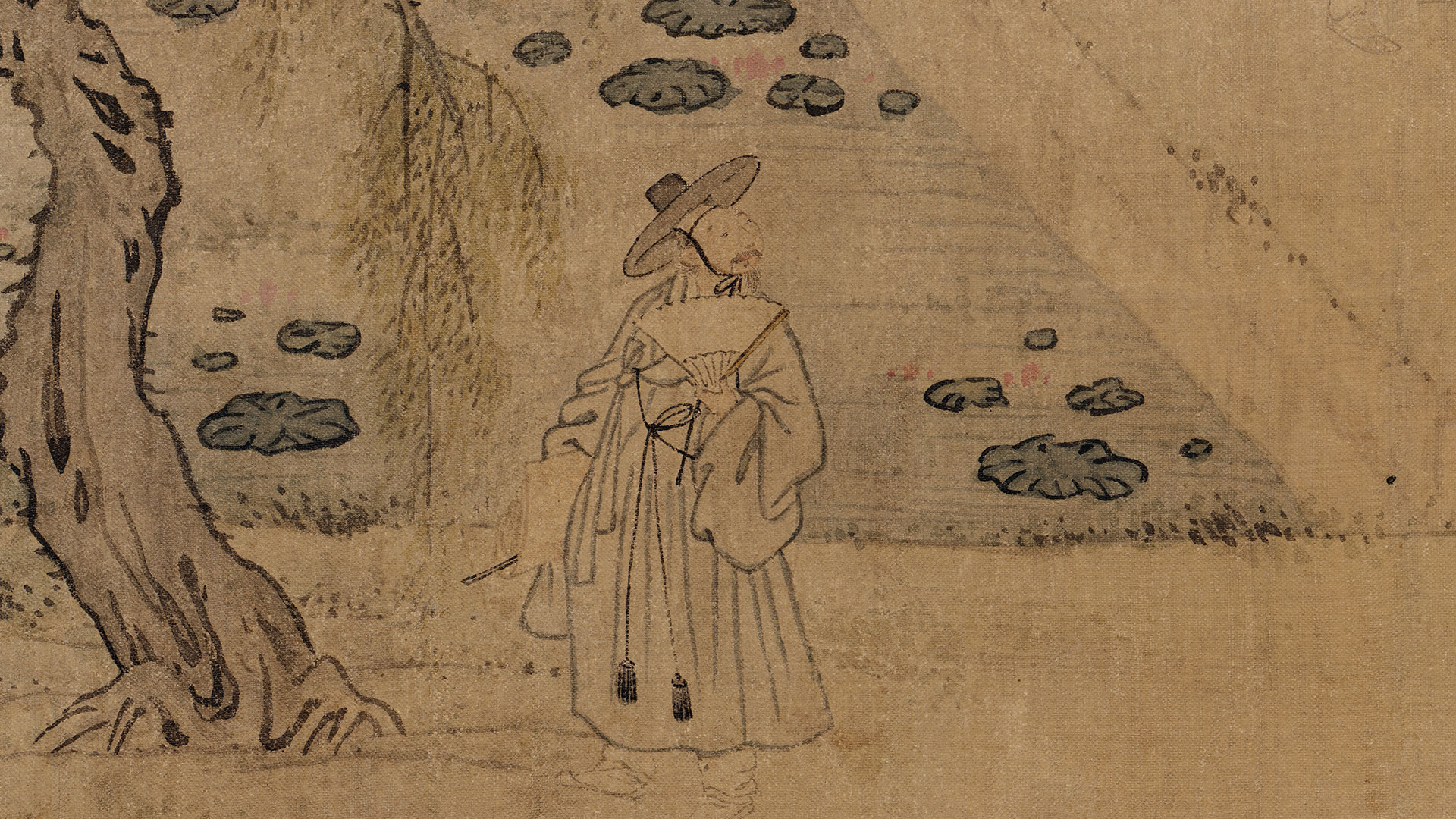
The Rank of Positions
| Position | Rank | Scene | Title |
|---|---|---|---|
| High-level Officials (Senior First – Higher Senior Third) |
Senior / Junior First | The 7th Panel | Senior First Official |
| Senior Second | The 6th Panel | Minister | |
| Junior Second | The 5th Panel | Magistrate | |
| Senior / Junior Third | - | - | |
| Low-level Officials (Lower Senior Third - Junior Ninth) |
Senior / Junior Fourth | - | - |
| Senior / Junior Fifth | The 4th Panel | Senior Fifth Official in the Office of Special Advisors | |
| Senior / Junior Sixth | The 3rd Panel | The winner in first place of the State Examination | |
| Senior / Junior Seventh | - | - | |
| Senior / Junior Eighth | - | - | |
| Senior / Junior Ninth | - | - |
The person in the very front, who holds the folding fan on one hand and the cover for the sedan chair in the other hand, shouts to step aside to passersby. This person is an official slave who is responsible for guiding the passage of the official at the high-level.
The Rank of Positions
| Position | Rank | Scene | Title |
|---|---|---|---|
| High-level Officials (Senior First – Higher Senior Third) |
Senior / Junior First | The 7th Panel | Senior First Official |
| Senior Second | The 6th Panel | Minister | |
| Junior Second | The 5th Panel | Magistrate | |
| Senior / Junior Third | - | - | |
| Low-level Officials (Lower Senior Third - Junior Ninth) |
Senior / Junior Fourth | - | - |
| Senior / Junior Fifth | The 4th Panel | Senior Fifth Official in the Office of Special Advisors | |
| Senior / Junior Sixth | The 3rd Panel | The winner in first place of the State Examination | |
| Senior / Junior Seventh | - | - | |
| Senior / Junior Eighth | - | - | |
| Senior / Junior Ninth | - | - |
Joseon dispatched officials to all over the provinces to maintain the centralizing system and appointed provincial governors for each of the eight provinces of Joseon who controlled the military, judicial and administrative authorities as the Senior Second officials. The major duties of the provincial governor consist of overseeing the customs and livelihood of the people of the villages and supervise a district magistrate, a leader of each village. The government official who is appointed as a provincial governor visits Hanyang, a capital of Joseon, to bid farewell to the king and is conferred the letter of appointment, the message recording the duties of the governor and military instructions before leaving for his new post. This painting depicts the procession of the group including the main figure of this painting, who is appointed as a magistrate of Songdo (the capital the Goryeo dynasty). Magistrate refers to an official post at an administrative district for institutions established in former capitals or important military bases. One of the two magistrates for Songdo holds a concurrent position of the governor for Gyeonggi province.
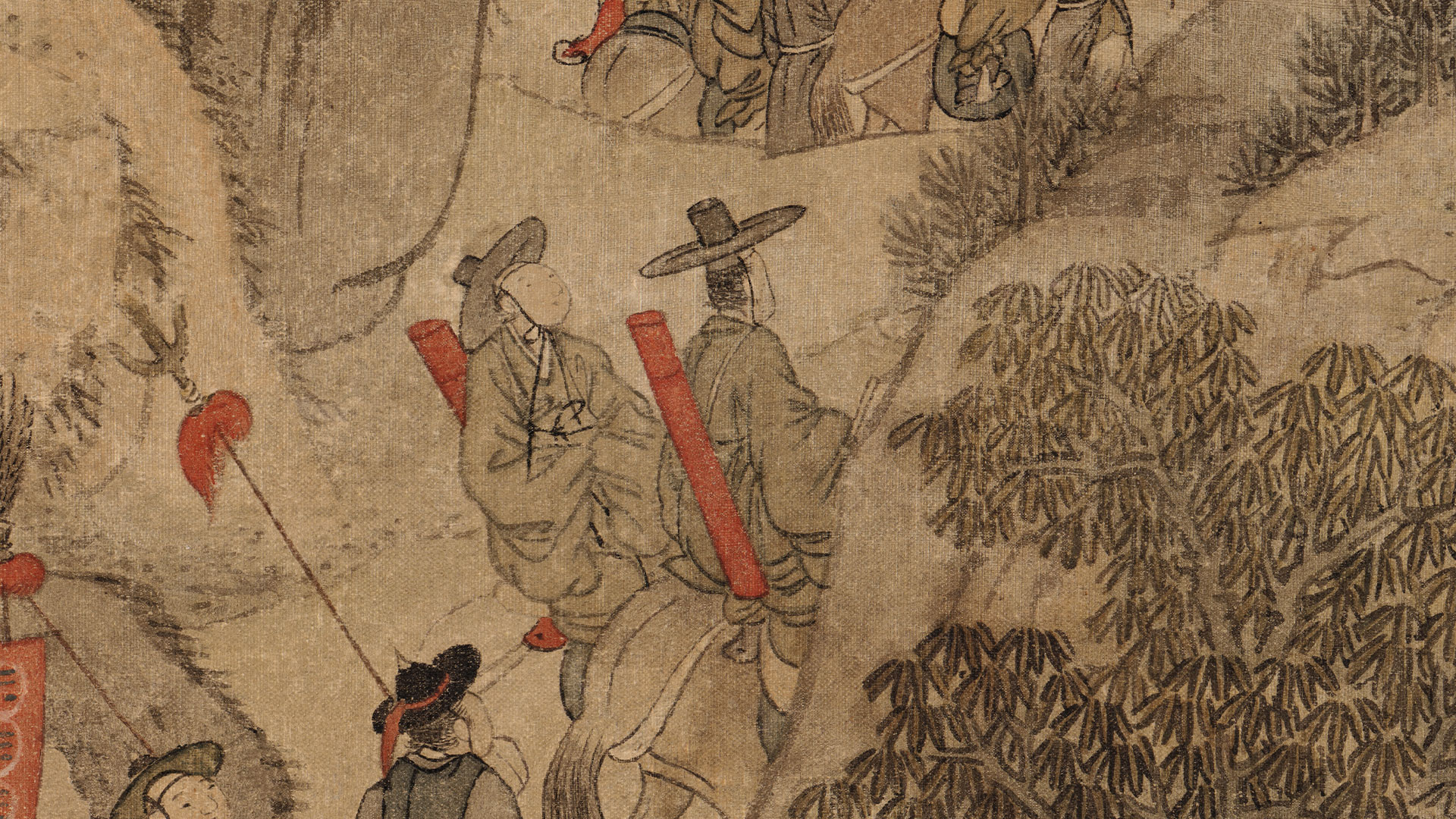
The Rank of Positions
| Position | Rank | Scene | Title |
|---|---|---|---|
| High-level Officials (Senior First – Higher Senior Third) |
Senior / Junior First | The 7th Panel | Senior First Official |
| Senior Second | The 6th Panel | Minister | |
| Junior Second | The 5th Panel | Magistrate | |
| Senior / Junior Third | - | - | |
| Low-level Officials (Lower Senior Third - Junior Ninth) |
Senior / Junior Fourth | - | - |
| Senior / Junior Fifth | The 4th Panel | Senior Fifth Official in the Office of Special Advisors | |
| Senior / Junior Sixth | The 3rd Panel | The winner in first place of the State Examination | |
| Senior / Junior Seventh | - | - | |
| Senior / Junior Eighth | - | - | |
| Senior / Junior Ninth | - | - |
The two people walk at the front of the procession while carrying the red containers. One is the message recording the duties and rights of the governor, which is conferred by the king, and the other is the military instructions delivering the message that the governor is required to check with the Bureau of Military Affairs when mobilizing the military.
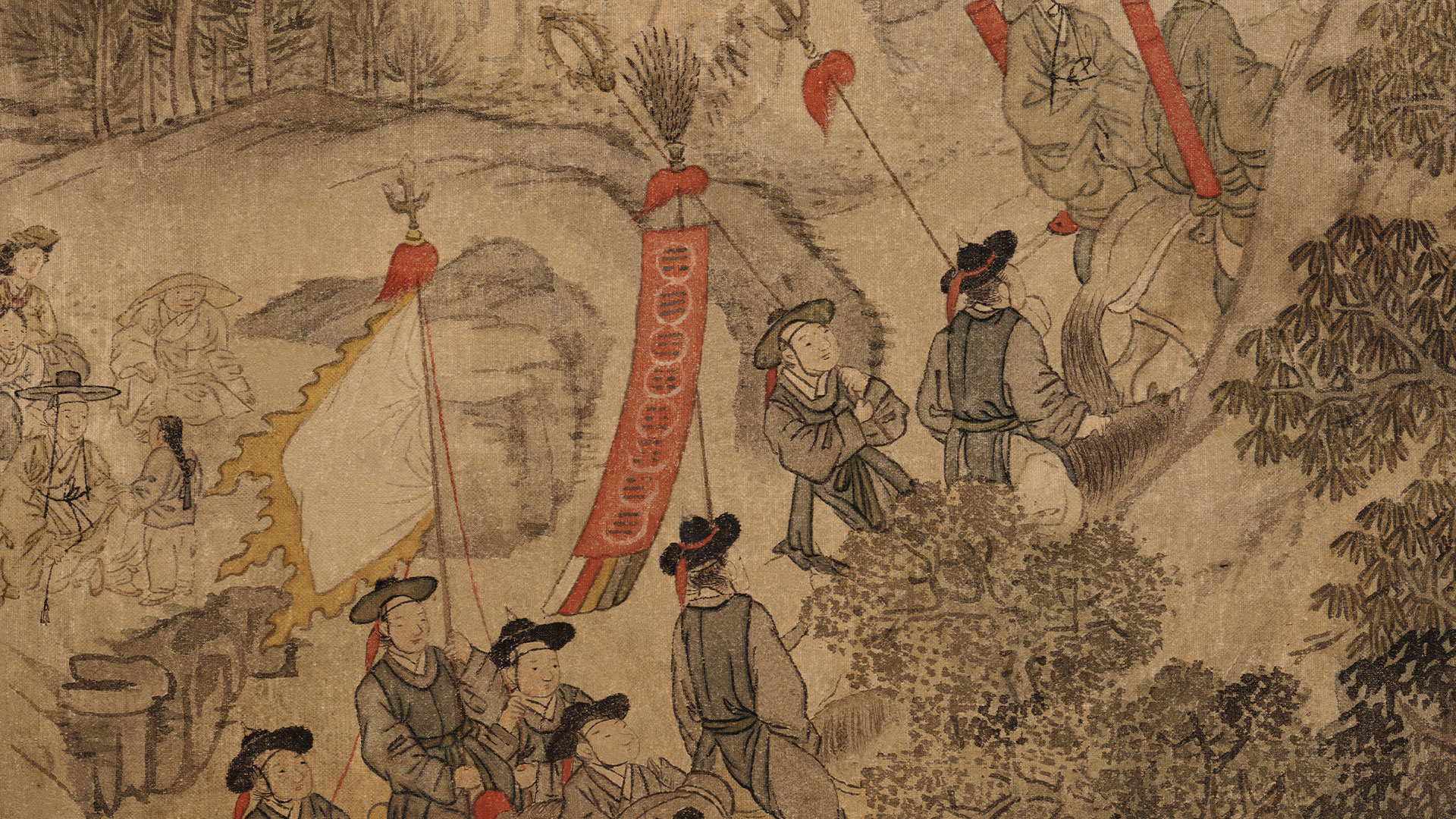
The Rank of Positions
| Position | Rank | Scene | Title |
|---|---|---|---|
| High-level Officials (Senior First – Higher Senior Third) |
Senior / Junior First | The 7th Panel | Senior First Official |
| Senior Second | The 6th Panel | Minister | |
| Junior Second | The 5th Panel | Magistrate | |
| Senior / Junior Third | - | - | |
| Low-level Officials (Lower Senior Third - Junior Ninth) |
Senior / Junior Fourth | - | - |
| Senior / Junior Fifth | The 4th Panel | Senior Fifth Official in the Office of Special Advisors | |
| Senior / Junior Sixth | The 3rd Panel | The winner in first place of the State Examination | |
| Senior / Junior Seventh | - | - | |
| Senior / Junior Eighth | - | - | |
| Senior / Junior Ninth | - | - |
They join the procession by holding the flags, representing the provincial governors and controls.

The Rank of Positions
| Position | Rank | Scene | Title |
|---|---|---|---|
| High-level Officials (Senior First – Higher Senior Third) |
Senior / Junior First | The 7th Panel | Senior First Official |
| Senior Second | The 6th Panel | Minister | |
| Junior Second | The 5th Panel | Magistrate | |
| Senior / Junior Third | - | - | |
| Low-level Officials (Lower Senior Third - Junior Ninth) |
Senior / Junior Fourth | - | - |
| Senior / Junior Fifth | The 4th Panel | Senior Fifth Official in the Office of Special Advisors | |
| Senior / Junior Sixth | The 3rd Panel | The winner in first place of the State Examination | |
| Senior / Junior Seventh | - | - | |
| Senior / Junior Eighth | - | - | |
| Senior / Junior Ninth | - | - |
Officers join the procession while playing the military music with an arrangement of the traditional Korean instruments.
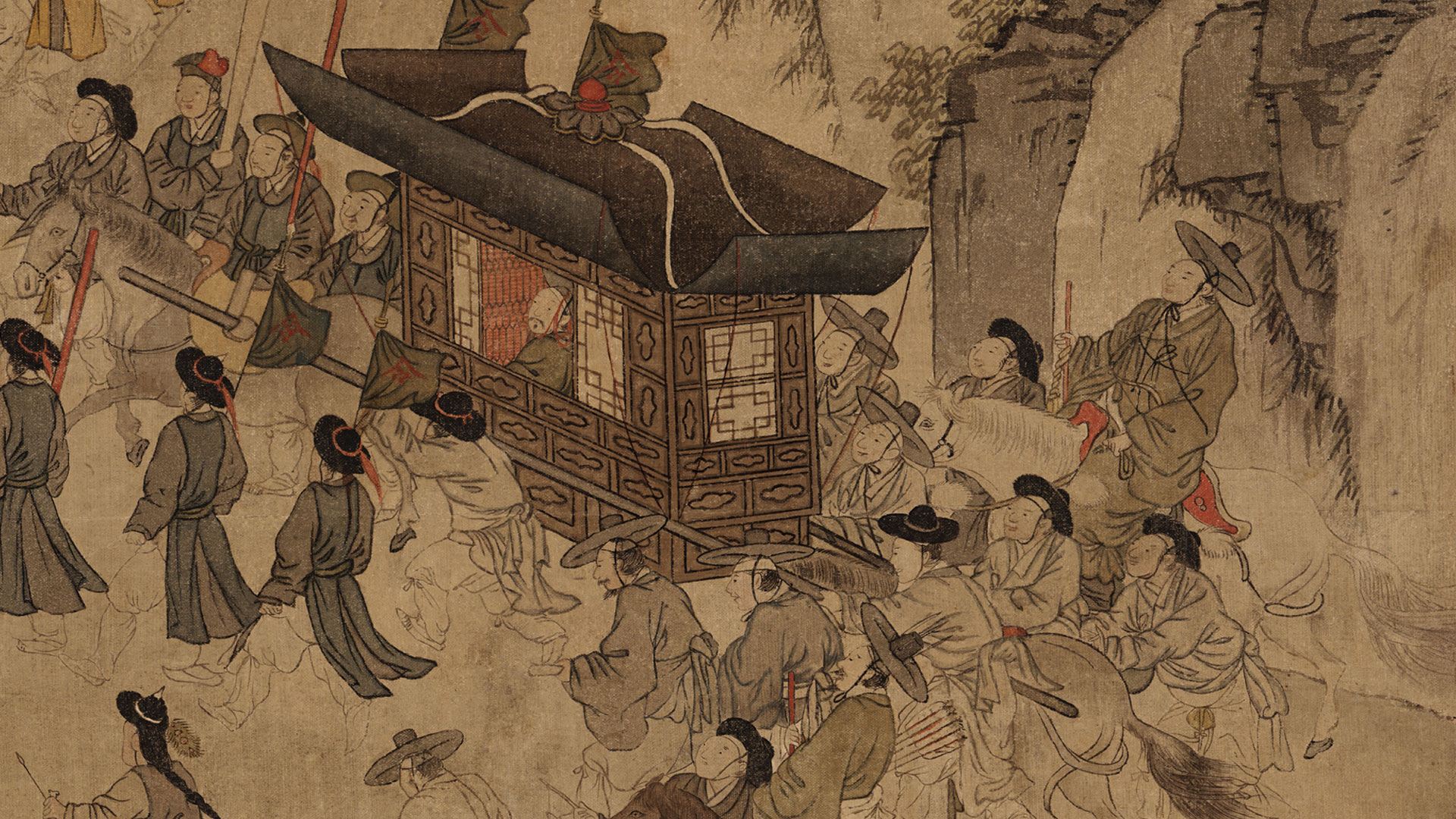
The Rank of Positions
| Position | Rank | Scene | Title |
|---|---|---|---|
| High-level Officials (Senior First – Higher Senior Third) |
Senior / Junior First | The 7th Panel | Senior First Official |
| Senior Second | The 6th Panel | Minister | |
| Junior Second | The 5th Panel | Magistrate | |
| Senior / Junior Third | - | - | |
| Low-level Officials (Lower Senior Third - Junior Ninth) |
Senior / Junior Fourth | - | - |
| Senior / Junior Fifth | The 4th Panel | Senior Fifth Official in the Office of Special Advisors | |
| Senior / Junior Sixth | The 3rd Panel | The winner in first place of the State Examination | |
| Senior / Junior Seventh | - | - | |
| Senior / Junior Eighth | - | - | |
| Senior / Junior Ninth | - | - |
A sedan chair driven by two horses in front and rear, respectively, is comfortable and shows dignity, and thereby is only permitted for the royal family inside the City Wall. Even outside, government officials at the Second ranks or higher are permitted to ride it.
The Rank of Positions
| Position | Rank | Scene | Title |
|---|---|---|---|
| High-level Officials (Senior First – Higher Senior Third) |
Senior / Junior First | The 7th Panel | Senior First Official |
| Senior Second | The 6th Panel | Minister | |
| Junior Second | The 5th Panel | Magistrate | |
| Senior / Junior Third | - | - | |
| Low-level Officials (Lower Senior Third - Junior Ninth) |
Senior / Junior Fourth | - | - |
| Senior / Junior Fifth | The 4th Panel | Senior Fifth Official in the Office of Special Advisors | |
| Senior / Junior Sixth | The 3rd Panel | The winner in first place of the State Examination | |
| Senior / Junior Seventh | - | - | |
| Senior / Junior Eighth | - | - | |
| Senior / Junior Ninth | - | - |
In the Joseon dynasty, the rank of position was conferred to government officials. The rank was divided into a total 18 classes from the Senior First to Junior Ninth. High-level officials covered those from the Senior First to the Senior Third, who can sit on the chair on the floor of the palace whereas low-level officials include the rest from the Junior Third to the Junior Ninth. Considering the title of this painting, the person is presumed to assume the post of the Senior Fifth official in the Office of Special Advisors, an institution called the Three Offices with the Office of the Inspector-General and the Office of Censors, and of hallym, a royal archivist. The official at the Office of Special Advisors was a very advantageous position for a success since he was able to visit the King and had many opportunities to state beliefs of scholar officials. To be qualified as an official for Special Advisors, he needs to be equipped with not only expert writing skills but also academic knowledge to serve as an advisor for the king and characters. Above all, honesty and spirit are the most important aspects to obtain the honor of a man of integrity.
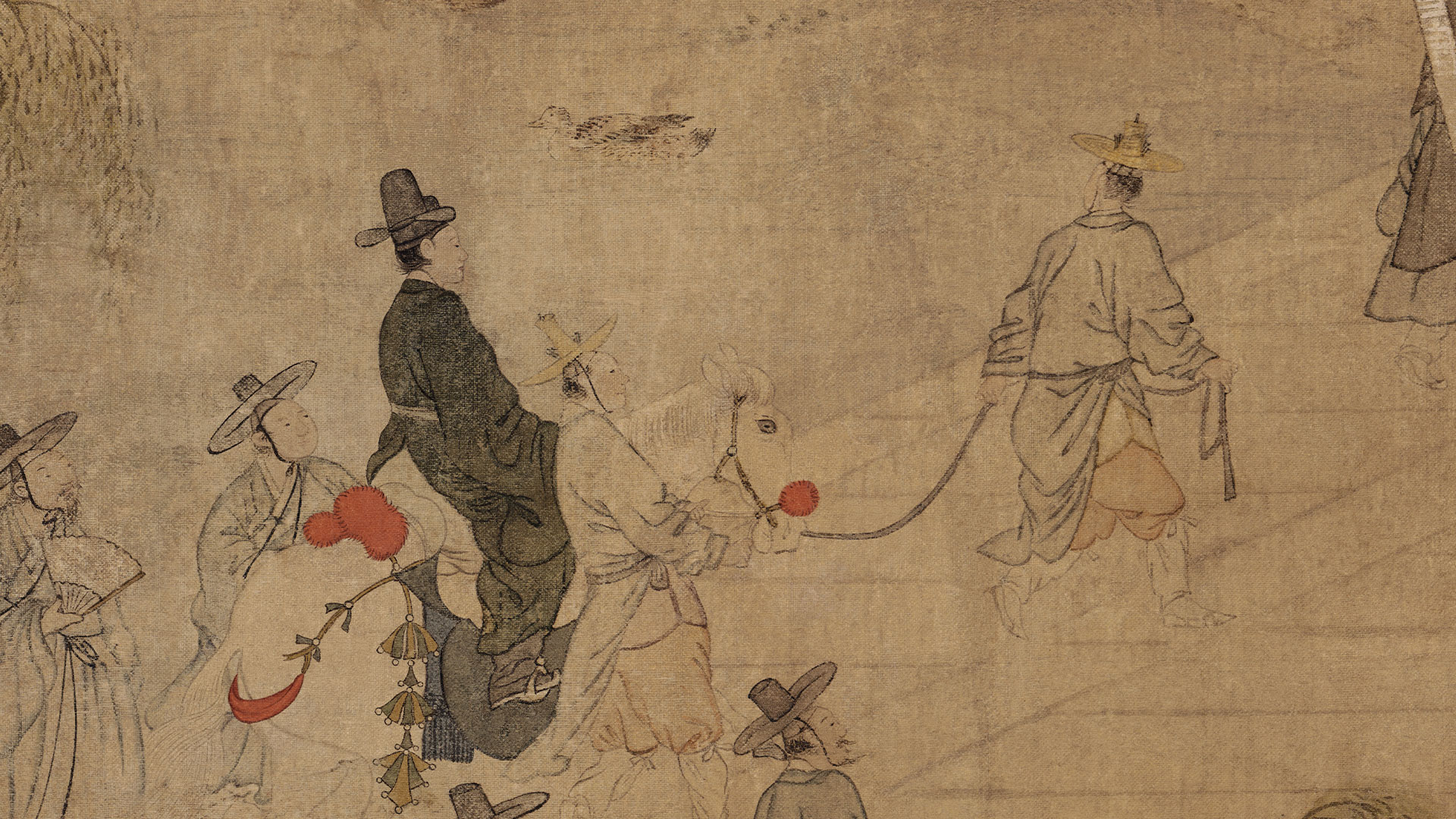
The Rank of Positions
| Position | Rank | Scene | Title |
|---|---|---|---|
| High-level Officials (Senior First – Higher Senior Third) |
Senior / Junior First | The 7th Panel | Senior First Official |
| Senior Second | The 6th Panel | Minister | |
| Junior Second | The 5th Panel | Magistrate | |
| Senior / Junior Third | - | - | |
| Low-level Officials (Lower Senior Third - Junior Ninth) |
Senior / Junior Fourth | - | - |
| Senior / Junior Fifth | The 4th Panel | Senior Fifth Official in the Office of Special Advisors | |
| Senior / Junior Sixth | The 3rd Panel | The winner in first place of the State Examination | |
| Senior / Junior Seventh | - | - | |
| Senior / Junior Eighth | - | - | |
| Senior / Junior Ninth | - | - |
As the government official who goes to work in the office, he wears the official clothes in blue and rides the white horse.
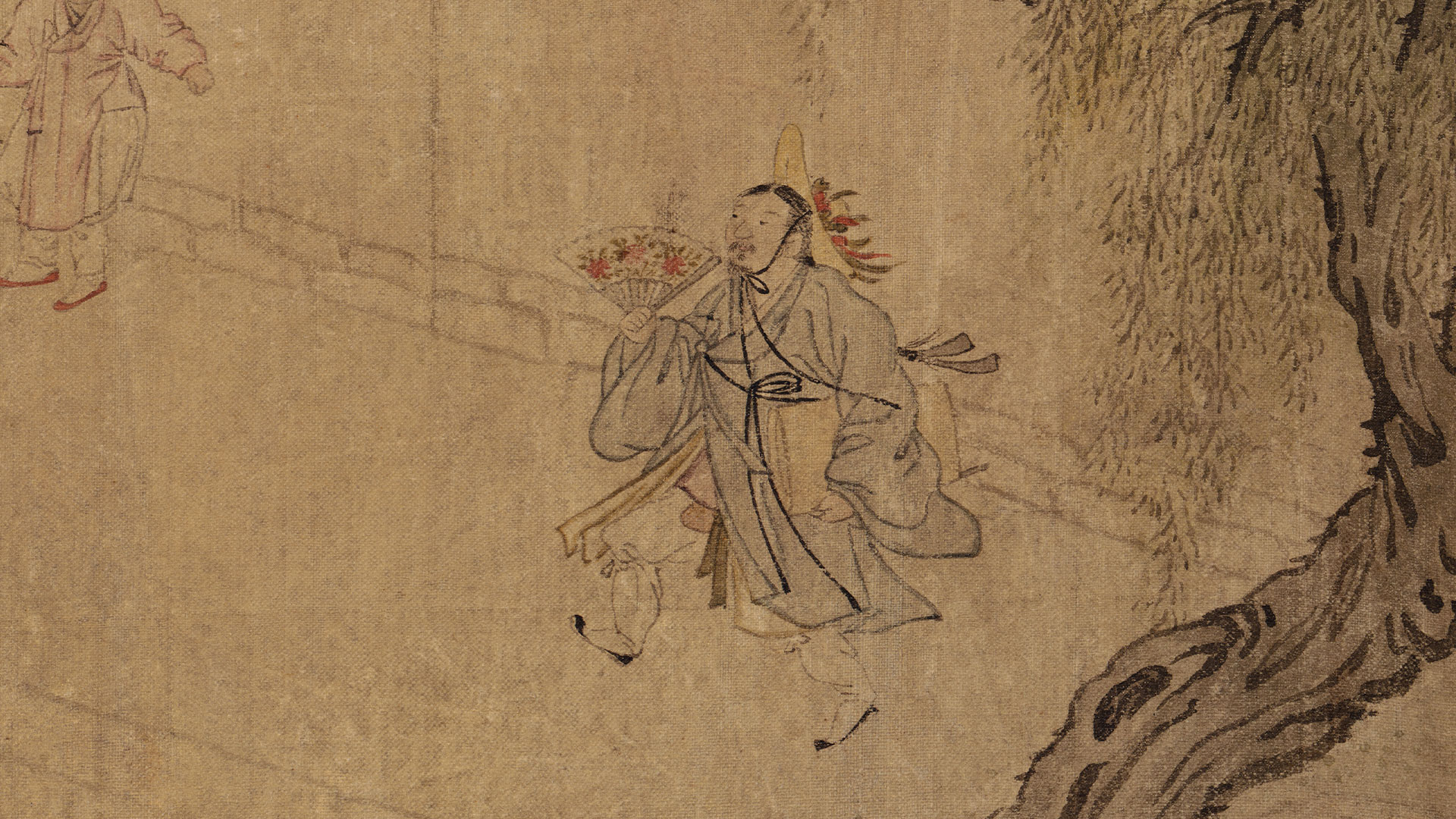
The Rank of Positions
| Position | Rank | Scene | Title |
|---|---|---|---|
| High-level Officials (Senior First – Higher Senior Third) |
Senior / Junior First | The 7th Panel | Senior First Official |
| Senior Second | The 6th Panel | Minister | |
| Junior Second | The 5th Panel | Magistrate | |
| Senior / Junior Third | - | - | |
| Low-level Officials (Lower Senior Third - Junior Ninth) |
Senior / Junior Fourth | - | - |
| Senior / Junior Fifth | The 4th Panel | Senior Fifth Official in the Office of Special Advisors | |
| Senior / Junior Sixth | The 3rd Panel | The winner in first place of the State Examination | |
| Senior / Junior Seventh | - | - | |
| Senior / Junior Eighth | - | - | |
| Senior / Junior Ninth | - | - |
In the Joseon dynasty, a specific servant, who was responsible for announcing the procession of the government officials by calling “Clear the Way” to facilitate their movements, was designated. He holds the folding fan on one hand and a cover for the sedan chair to block rain or snow on the other hand.
The State Examination in the late Joseon Period
Three ways exist for taking the governmental official posts in the Joseon dynasty: 1) a recommendation from a high-level official;
2) a child from a high-level official family; or 3) the State Examination. Without a solid background, the only way for scholar- officials to take on the governmental posts is passing the State Examination.
The Procedure of the State Examination
- 1. The applicants submit the documents recording the official posts of the family elders and personal information and a reference letter 10 days prior to the examination. This aims to check whether the applicants are qualified for the Examination.
- 2. The day of the Examination, the supervisors check whether the name of the applicant is included in the list and allows him to enter the test site.
- 3. The supervisors check the clothes and belongings of the applicants in a strict manner, and those whose violations are caught outside of the test site are prohibited from taking the test for three years and those who are caught inside for six years.
- 4. During the test, the answer sheets are collected for an attachment of the official stamp, and the applicants can answer the questions only on the paper with such stamps.
- 5. Once the answers are submitted, the answers are transcribed to different sheets of paper to prevent judges from realizing the identifications of the applicants from their handwriting styles. The transcribed paper is scored after checking for mistakes in the transcriptions.
- 6. After an evaluation, the identifications of the applicants are checked and the list of those who pass the State Examination is announced.
The highest goal of the scholar officials in Joseon was to pass the higher civil service examination and reach a high official position. Any commoners, except for the degraded class, were able to take the examination. People usually started studying from their childhood at local elementary school, and the average age of those who passed the examination was 30, which implicates that it was a significant gateway of life that can be passed after at least 20 years of study. The Council of State and the Ministry of Rites of the Joseon dynasty threw the party for those who passed the State Examination and helped them form a procession through the village and enjoy the pleasure derived from the passing of the exam. This painting depicts a three-day procession by a person who has passed the State Examination, in which he wears an official hat with the flower presented by the king and joins a procession formed by the band and performers who enjoy cheerful dance moves. They receive congratulations from the villagers.
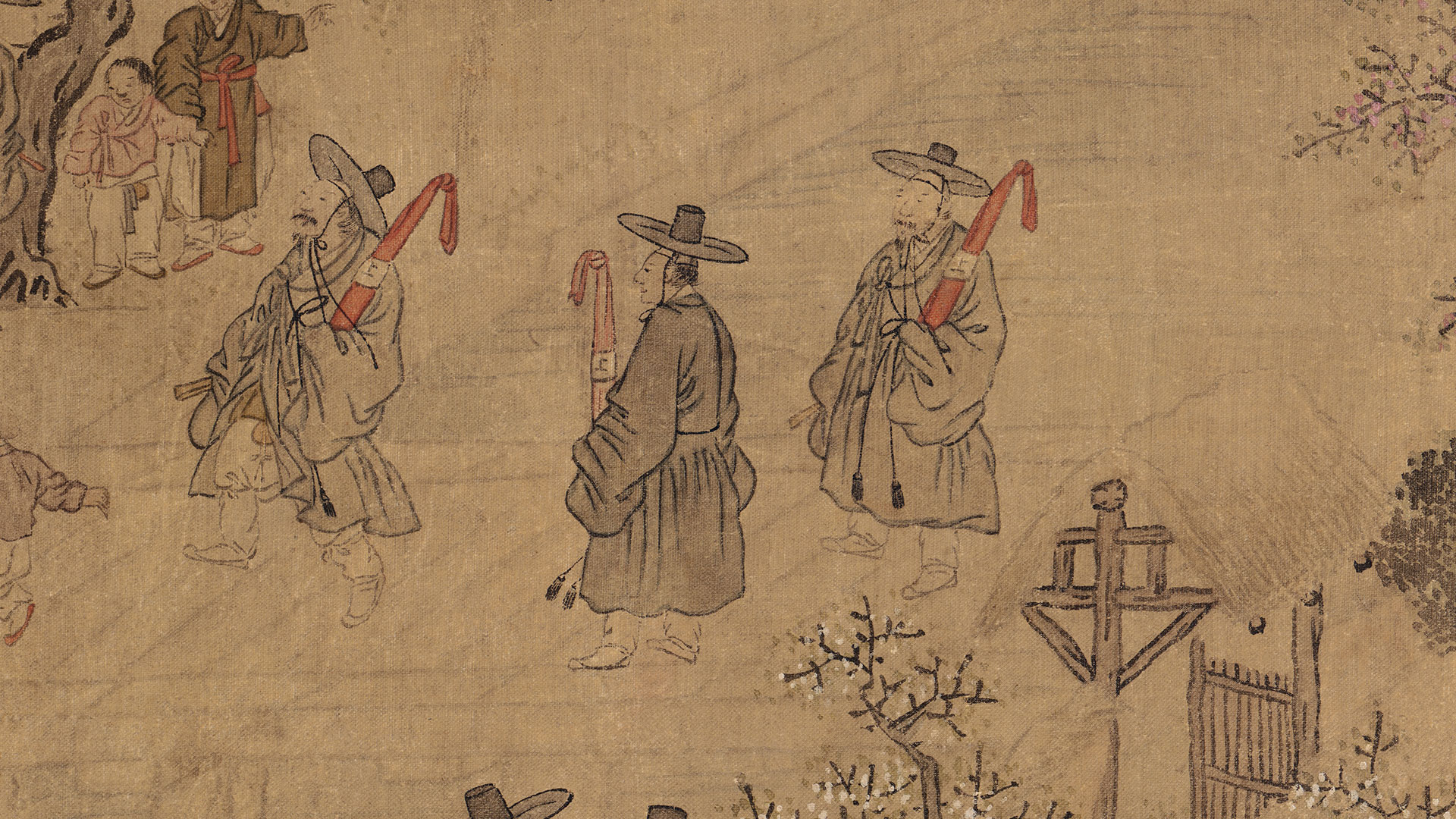
The State Examination in the late Joseon Period
Three ways exist for taking the governmental official posts in the Joseon dynasty: 1) a recommendation from a high-level official; 2) a child from a high-level official family; or 3) the State Examination. Without a solid background, the only way for scholar- officials to take on the governmental posts is passing the State Examination
The Procedure of the State Examination
- 1. The applicants submit the documents recording the official posts of the family elders and personal information and a reference letter 10 days prior to the examination. This aims to check whether the applicants are qualified for the Examination.
- 2. The day of the Examination, the supervisors check whether the name of the applicant is included in the list and allows him to enter the test site.
- 3. The supervisors check the clothes and belongings of the applicants in a strict manner, and those whose violations are caught outside of the test site are prohibited from taking the test for three years and those who are caught inside for six years.
- 4. During the test, the answer sheets are collected for an attachment of the official stamp, and the applicants can answer the questions only on the paper with such stamps.
- 5. Once the answers are submitted, the answers are transcribed to different sheets of paper to prevent judges from realizing the identifications of the applicants from their handwriting styles. The transcribed paper is scored after checking for mistakes in the transcriptions.
- 6. After an evaluation, the identifications of the applicants are checked and the list of those who pass the State Examination is announced.
The three people crossing the bridge holds a long object covered with the red cloth: this is the letter of acceptance.
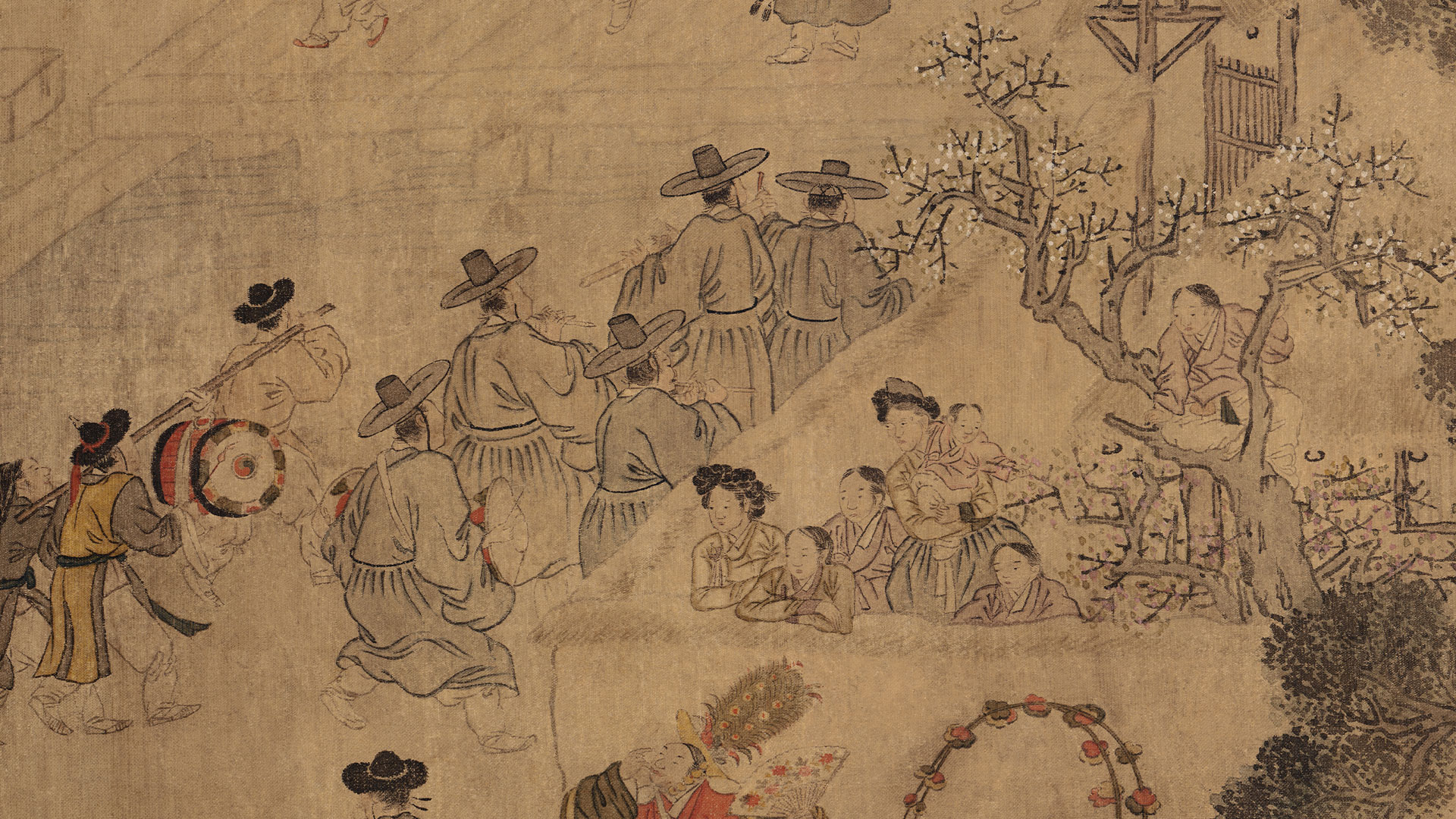
The State Examination in the late Joseon Period
Three ways exist for taking the governmental official posts in the Joseon dynasty: 1) a recommendation from a high-level official; 2) a child from a high-level official family; or 3) the State Examination. Without a solid background, the only way for scholar- officials to take on the governmental posts is passing the State Examination.
The Procedure of the State Examination
- 1. The applicants submit the documents recording the official posts of the family elders and personal information and a reference letter 10 days prior to the examination. This aims to check whether the applicants are qualified for the Examination.
- 2. The day of the Examination, the supervisors check whether the name of the applicant is included in the list and allows him to enter the test site.
- 3. The supervisors check the clothes and belongings of the applicants in a strict manner, and those whose violations are caught outside of the test site are prohibited from taking the test for three years and those who are caught inside for six years.
- 4. During the test, the answer sheets are collected for an attachment of the official stamp, and the applicants can answer the questions only on the paper with such stamps.
- 5. Once the answers are submitted, the answers are transcribed to different sheets of paper to prevent judges from realizing the identifications of the applicants from their handwriting styles. The transcribed paper is scored after checking for mistakes in the transcriptions.
- 6. After an evaluation, the identifications of the applicants are checked and the list of those who pass the State Examination is announced.
The musicians in front of the person holding the drum play a series of traditional Korean instruments which is a basic arrangement of the three strings and six horns, for the traditional Korean dance of folk games.
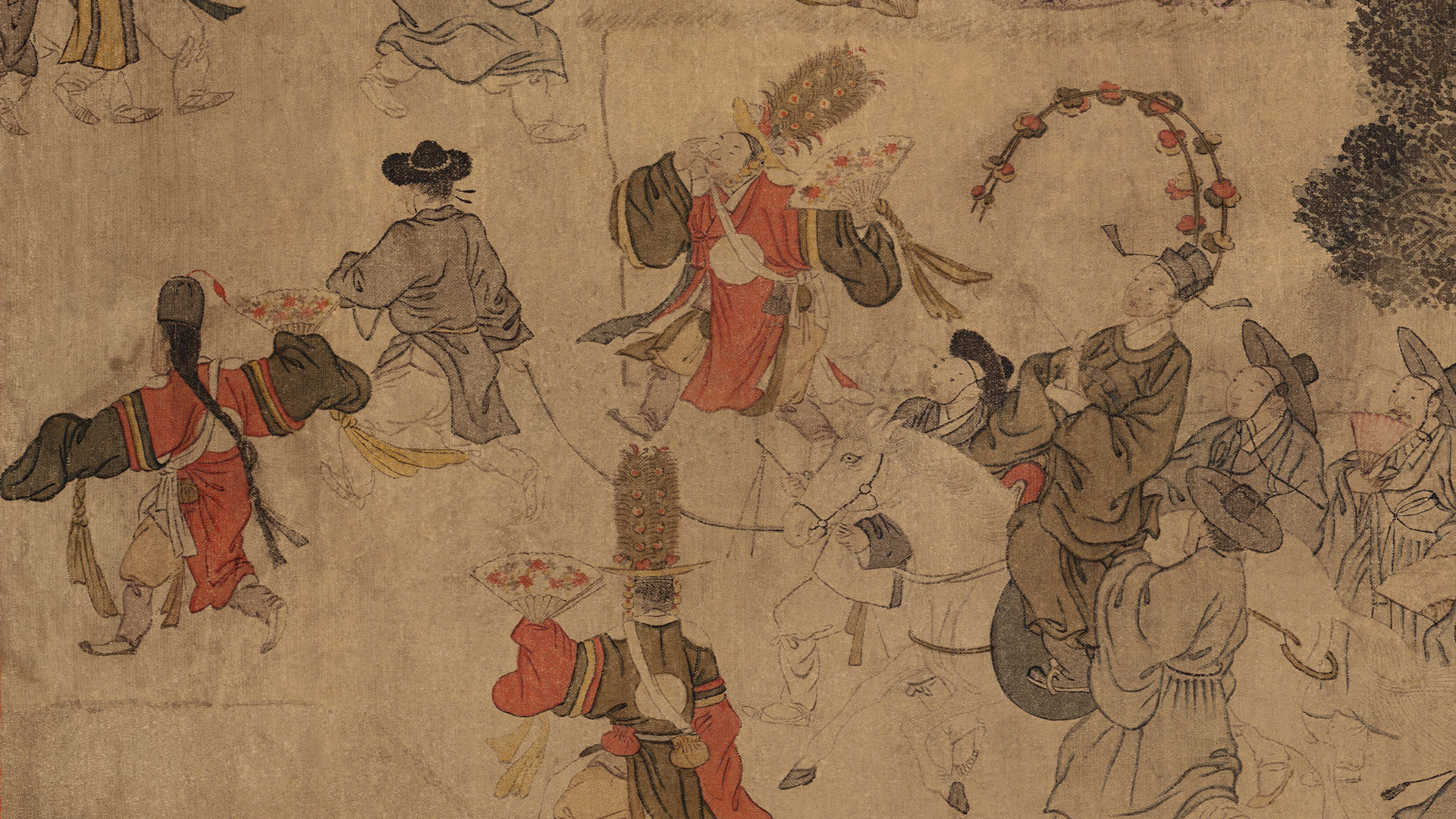
The State Examination in the late Joseon Period
Three ways exist for taking the governmental official posts in the Joseon dynasty: 1) a recommendation from a high-level official; 2) a child from a high-level official family; or 3) the State Examination. Without a solid background, the only way for scholar- officials to take on the governmental posts is passing the State Examination.
The Procedure of the State Examination
- 1. The applicants submit the documents recording the official posts of the family elders and personal information and a reference letter 10 days prior to the examination. This aims to check whether the applicants are qualified for the Examination.
- 2. The day of the Examination, the supervisors check whether the name of the applicant is included in the list and allows him to enter the test site.
- 3. The supervisors check the clothes and belongings of the applicants in a strict manner, and those whose violations are caught outside of the test site are prohibited from taking the test for three years and those who are caught inside for six years.
- 4. During the test, the answer sheets are collected for an attachment of the official stamp, and the applicants can answer the questions only on the paper with such stamps.
- 5. Once the answers are submitted, the answers are transcribed to different sheets of paper to prevent judges from realizing the identifications of the applicants from their handwriting styles. The transcribed paper is scored after checking for mistakes in the transcriptions.
- 6. After an evaluation, the identifications of the applicants are checked and the list of those who pass the State Examination is announced.
The performers wearing colorful clothes and hats decorated with the peacock feathers increase the excitement of the procession by dancing while holding the folding fans with peonies painted.
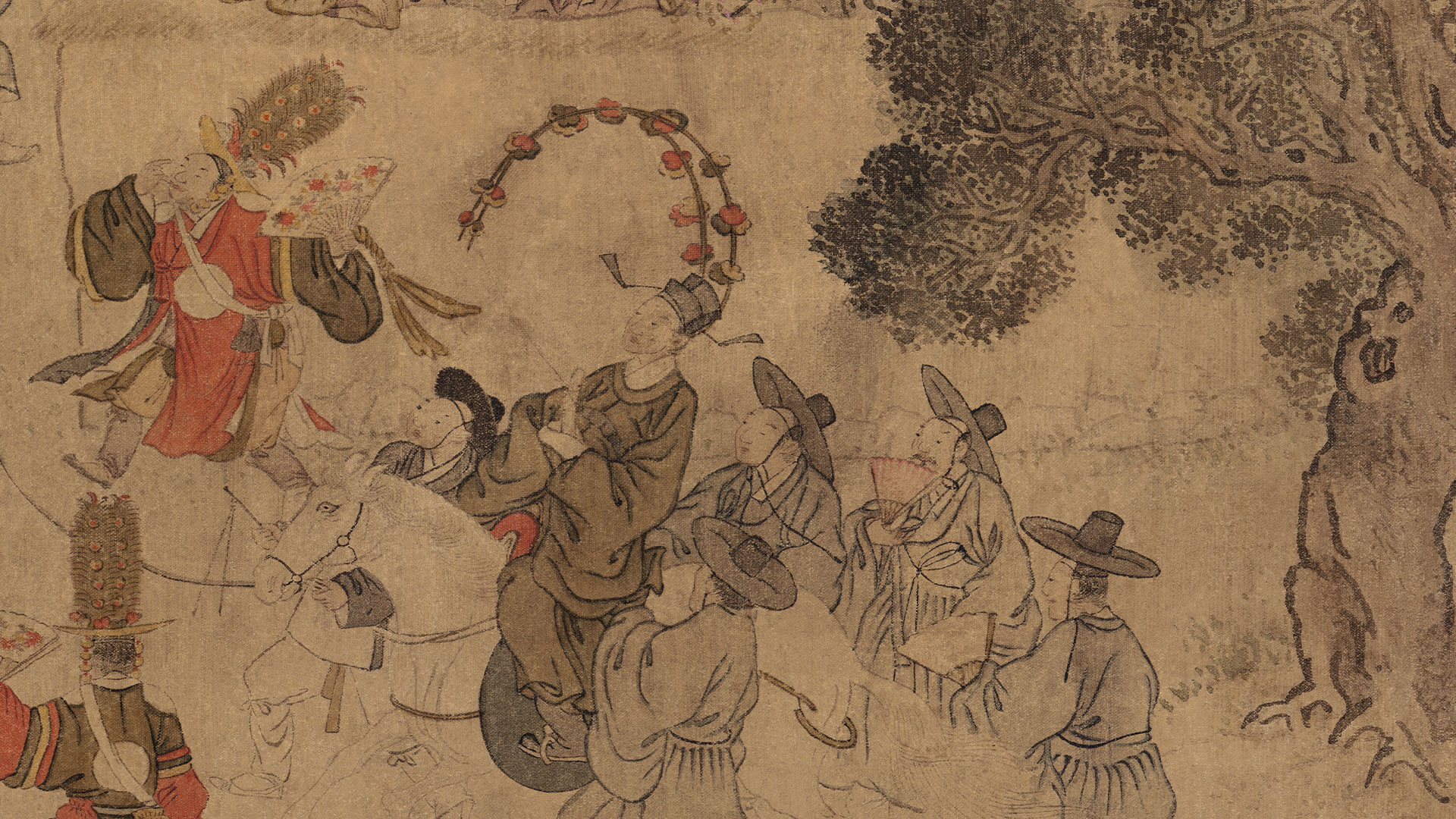
The State Examination in the late Joseon Period
Three ways exist for taking the governmental official posts in the Joseon dynasty: 1) a recommendation from a high-level official; 2) a child from a high-level official family; or 3) the State Examination. Without a solid background, the only way for scholar- officials to take on the governmental posts is passing the State Examination.
The Procedure of the State Examination
- 1. The applicants submit the documents recording the official posts of the family elders and personal information and a reference letter 10 days prior to the examination. This aims to check whether the applicants are qualified for the Examination.
- 2. The day of the Examination, the supervisors check whether the name of the applicant is included in the list and allows him to enter the test site.
- 3. The supervisors check the clothes and belongings of the applicants in a strict manner, and those whose violations are caught outside of the test site are prohibited from taking the test for three years and those who are caught inside for six years.
- 4. During the test, the answer sheets are collected for an attachment of the official stamp, and the applicants can answer the questions only on the paper with such stamps.
- 5. Once the answers are submitted, the answers are transcribed to different sheets of paper to prevent judges from realizing the identifications of the applicants from their handwriting styles. The transcribed paper is scored after checking for mistakes in the transcriptions.
- 6. After an evaluation, the identifications of the applicants are checked and the list of those who pass the State Examination is announced.
The winner of the State Examination wears aengsam, named after the parrot based on the similarity to its colors to the bird and the official hat for those who have passed the exam which is decorated with the flower granted by the king, and takes the procession while riding on the white horse led by the servant.
The formal procedures for the matrimony
- 1. The bridegroom's family delivers the intention of the marriage from to the bride's family (納采)
- 2. The bridegroom's family requests foretelling fortunes after asking the name of the bride (問名)
- 3. The bridegroom's family informs the results of reading fortunes to the bride's family (納吉)
- 4. The bride's family sends the letter and presents to promise the marriage (納幣)
- 5. The bridegroom's family decide on the day of the wedding and ask for its availability to the bride's family (請期)
- 6. The bridegroom visits the bride's house, brings her to his house to perform the wedding ceremony (親迎)
*Since the aforementioned procedures are complicated, the royal family or those at a high-level status carry out all the procedures, but scholar-officials or those under such a status conduct only the numbers 4 and 6.
People in Joseon considered ruling the country and maintaining order according to its governing principle, Confucianism, highly important, so marriage was only allowed within the same status. Even between the families of scholar-officials, it was entered into with careful consideration for regions, families, and political positions. It was because marriage was deemed to connect the two families, carry on a family line, and determine the rise and fall of the families. This painting depicts the passage for the bridegroom to welcome the bride to perform the wedding ceremony, which is a phase of completing the wedding procedure. In the early evening, the bridegroom personally visits the bride’s home, expresses respect to the ancestral shrine, performs the rite of receiving drinks from the parents of the bride, and presents a goose, a symbol of conjugal harmony, as an act of propriety. The bridegroom and the bride arrive at the bridegroom’s home the following morning and hold the wedding ceremony.
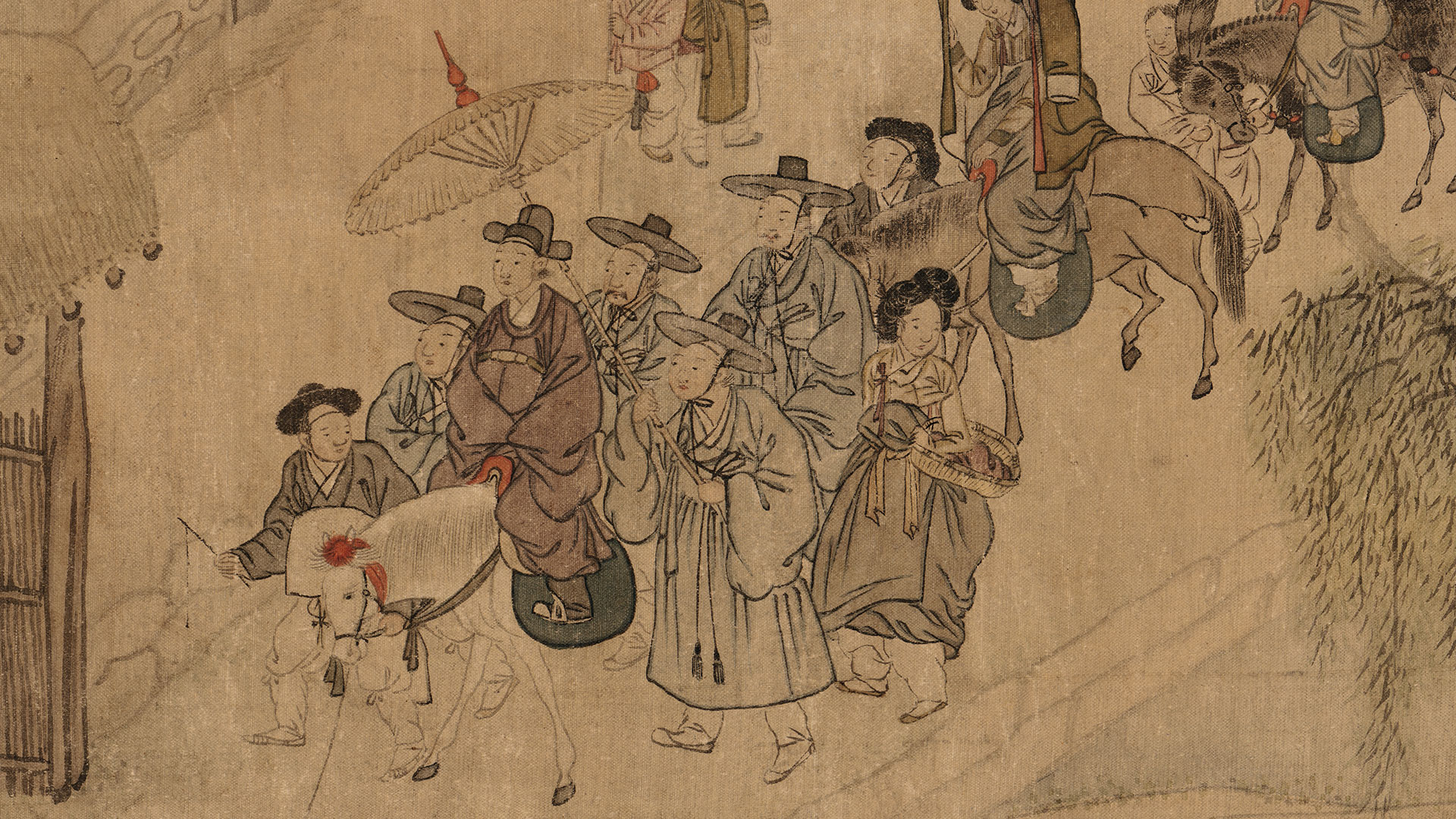
The formal procedures for the matrimony in the late Joseon period
- 1. The bridegroom's family delivers the intention of the marriage from to the bride's family (napchae, 納采)
- 2. The bridegroom's family requests foretelling fortunes after asking the name of the bride (munmyeong, 問名)
- 3. The bridegroom's family informs the results of reading fortunes to the bride's family (napgil, 納吉)
- 4. The bride's family sends the letter and presents to promise the marriage (nap-pye, 納幣)
- 5. The bridegroom's family decide on the day of the wedding and ask for its availability to the bride's family (cheonggi, 請期)
- 6. The bridegroom visits the bride's house, brings her to his house to perform the wedding ceremony (chingyeong, 親迎)
*Since the aforementioned procedures are complicated, the royal family or those at a high-level status carry out all the procedures, but scholar-officials or those under such a status conduct only the numbers 4 and 6.
The bridegroom riding on the horse heads to the house of the bride to perform the marriage ceremony. The bridegroom wears danryeong (official robe) in violet silk, the sash, and samo (hat) with double wings. This is the daily attire for civil and military officials, but commoners can wear it for their wedding ceremony. The white horse on which the bridegroom rides represents purity and nobleness.

The formal procedures for the matrimony in the late Joseon period
- 1. The bridegroom's family delivers the intention of the marriage from to the bride's family (napchae, 納采)
- 2. The bridegroom's family requests foretelling fortunes after asking the name of the bride (munmyeong, 問名)
- 3. The bridegroom's family informs the results of reading fortunes to the bride's family (napgil, 納吉)
- 4. The bride's family sends the letter and presents to promise the marriage (nap-pye, 納幣)
- 5. The bridegroom's family decide on the day of the wedding and ask for its availability to the bride's family (cheonggi, 請期)
- 6. The bridegroom visits the bride's house, brings her to his house to perform the wedding ceremony (chingyeong, 親迎)
*Since the aforementioned procedures are complicated, the royal family or those at a high-level status carry out all the procedures, but scholar-officials or those under such a status conduct only the numbers 4 and 6.
The person is carrying a goose wrapped in cloth. A goose stands for conjugal harmony since its relationship between the male and female. The bridegroom carries a goose as a signature for love when he enters the bride's house and performs a ceremony of placing it on the table and bowing.
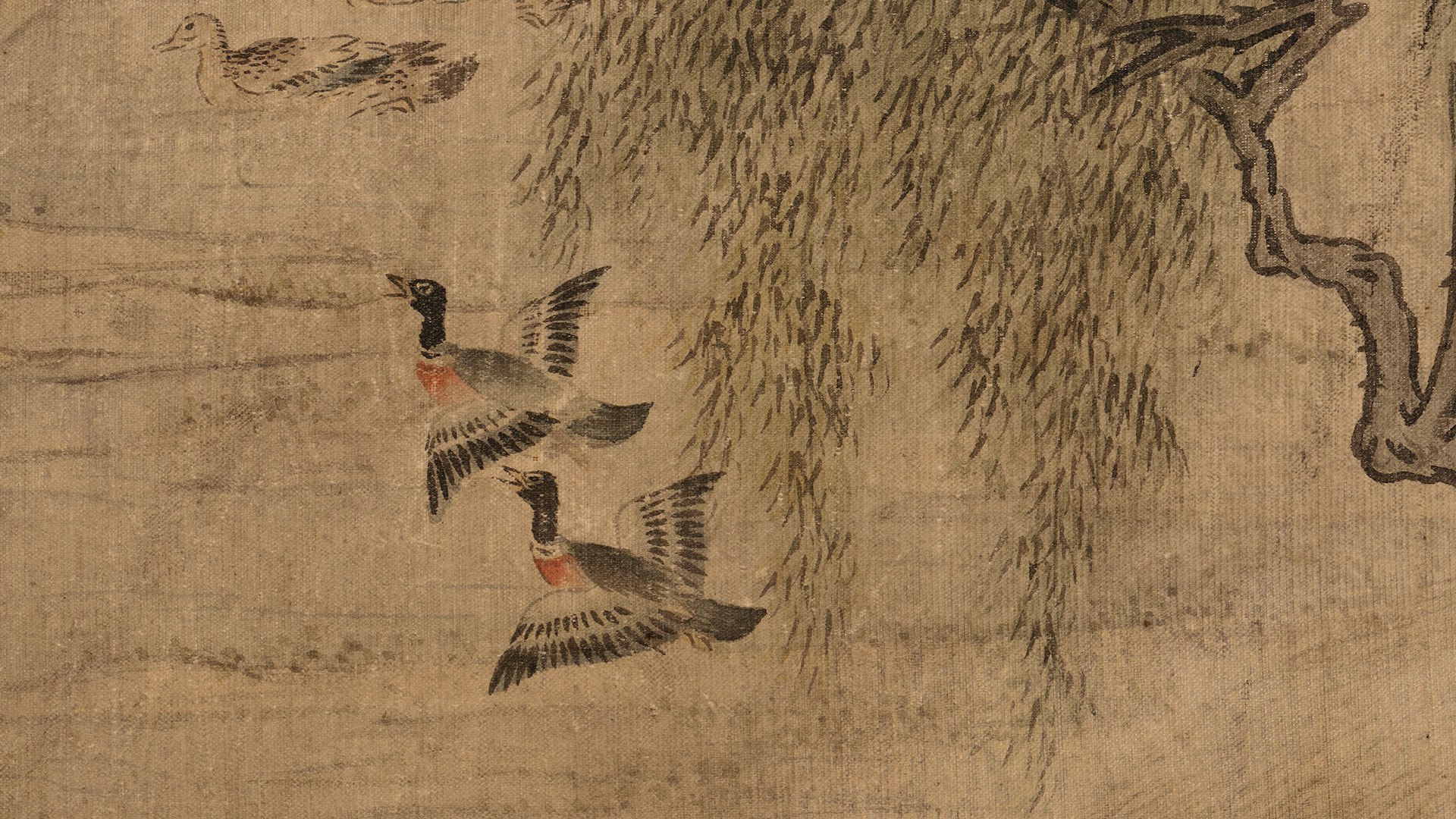
The formal procedures for the matrimony in the late Joseon period
- 1. The bridegroom's family delivers the intention of the marriage from to the bride's family (napchae, 納采)
- 2. The bridegroom's family requests foretelling fortunes after asking the name of the bride (munmyeong, 問名)
- 3. The bridegroom's family informs the results of reading fortunes to the bride's family (napgil, 納吉)
- 4. The bride's family sends the letter and presents to promise the marriage (nap-pye, 納幣)
- 5. The bridegroom's family decide on the day of the wedding and ask for its availability to the bride's family (cheonggi, 請期)
- 6. The bridegroom visits the bride's house, brings her to his house to perform the wedding ceremony (chingyeong, 親迎)
*Since the aforementioned procedures are complicated, the royal family or those at a high-level status carry out all the procedures, but scholar-officials or those under such a status conduct only the numbers 4 and 6.
A pair of ducks, representing a conjugal harmony, implies that a married couple grows old together in a harmonious relationship. The pair of ducks flying under the willow tree can be interpreted as a wish for their children to pass the State Examination since the Korean pronunciation for the willow tree(柳) and that of pomegranates(榴), a symbol for fecundity, are the same and the Chinese character for a duck(鴨) includes a Chinese character, gap(甲), meaning winning first place in the State Examination
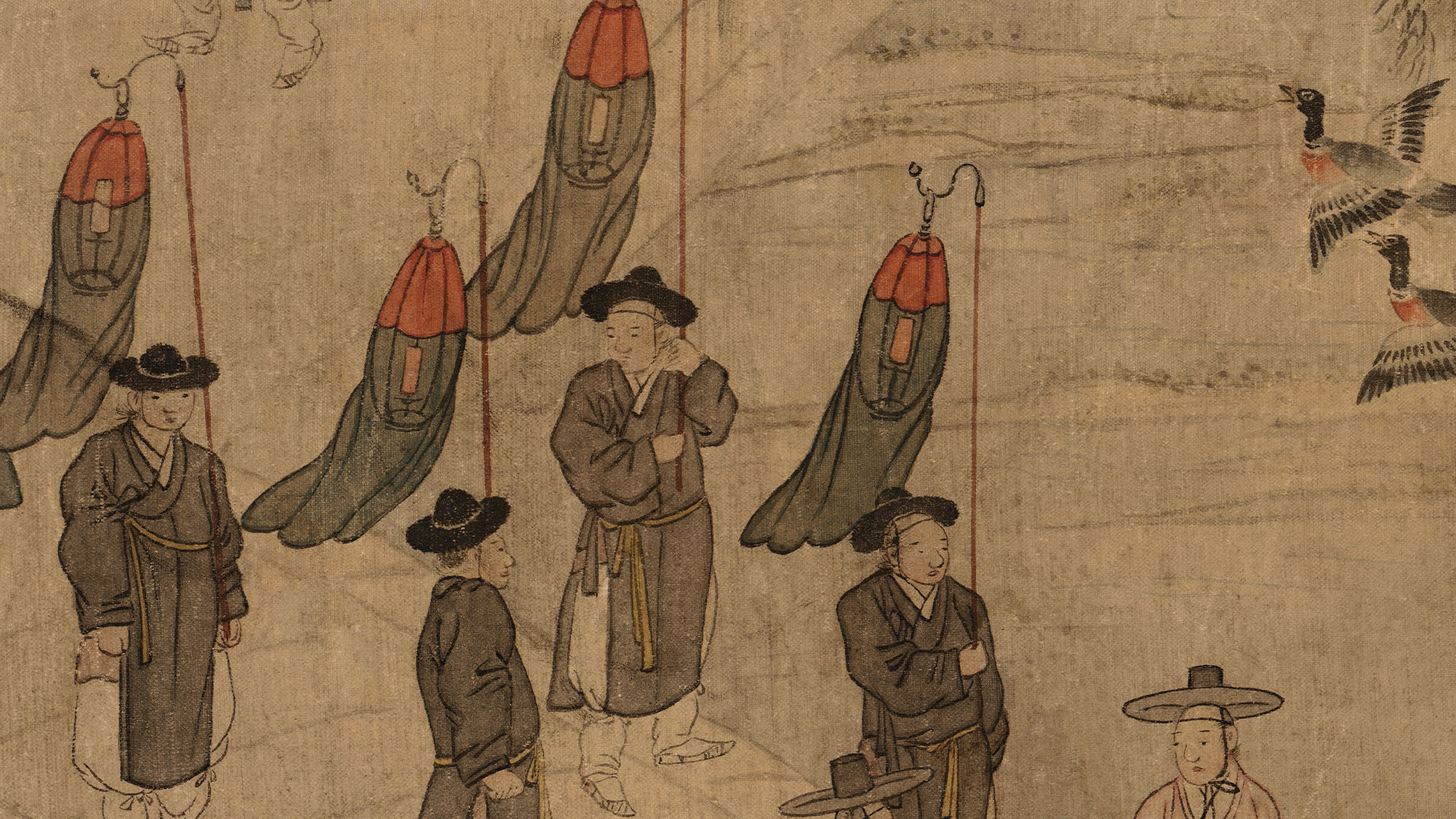
The formal procedures for the matrimony in the late Joseon period
- 1. The bridegroom's family delivers the intention of the marriage from to the bride's family (napchae, 納采)
- 2. The bridegroom's family requests foretelling fortunes after asking the name of the bride (munmyeong, 問名)
- 3. The bridegroom's family informs the results of reading fortunes to the bride's family (napgil, 納吉)
- 4. The bride's family sends the letter and presents to promise the marriage (nap-pye, 納幣)
- 5. The bridegroom's family decide on the day of the wedding and ask for its availability to the bride's family (cheonggi, 請期)
- 6. The bridegroom visits the bride's house, brings her to his house to perform the wedding ceremony (chingyeong, 親迎)
*Since the aforementioned procedures are complicated, the royal family or those at a high-level status carry out all the procedures, but scholar-officials or those under such a status conduct only the numbers 4 and 6.
The four people holding traditional Korean lanterns with red-and-blue silk shade are slaves from the government office. It is possible to borrow slaves from the government office for the purpose of guiding the bridegroom for the wedding ceremony. Considering they’re holding the lanterns, the bridegroom's visit to the bride's house, or chinyeong, is presumed to be carried out during the night.
Meanings of the items on the birthday table
- Plain white rice cake: clean and pure mind
- Half-moon shaped rice cake and rice: abundance of food
- Fruits including jujubes: fecundity
- Thread or noodle: longevity
- Money: Affluence
- Book, brush, ink stick, or inkstone: scholar or writer
- Stamp: government of official
*For boys a bow and arrow are placed to predict whether to be a general, and for girls, these items are replaced with a needle, colored paper and thread to emphasize the virtues of women.
In the period of Joseon, the first birthday for a baby without suffering any illness was a celebratory. In those days, the infant mortalities were low due to various reasons such as epidemics and diseases. Thus, a feat is held for the child who lives through one year without illness to bless the child’s future with longevity and fortune. People placed a series of objects and foods on the birthday table and saw which the child would choose first since they thought they could find his or her temperaments and foretell the child’s future with his or her choice. As the child in the painting holds the book, the baby is probably expected to have excellent academic abilities. This painting shows the first birthday celebration which is held by a family on a small scale. When a baby is born, access by outsiders is strictly controlled and only after 21 days elapses, can the face of the child be shown to very close family members. Thus, only close family members and relatives in general gather together to celebrate the baby’s first birthday.
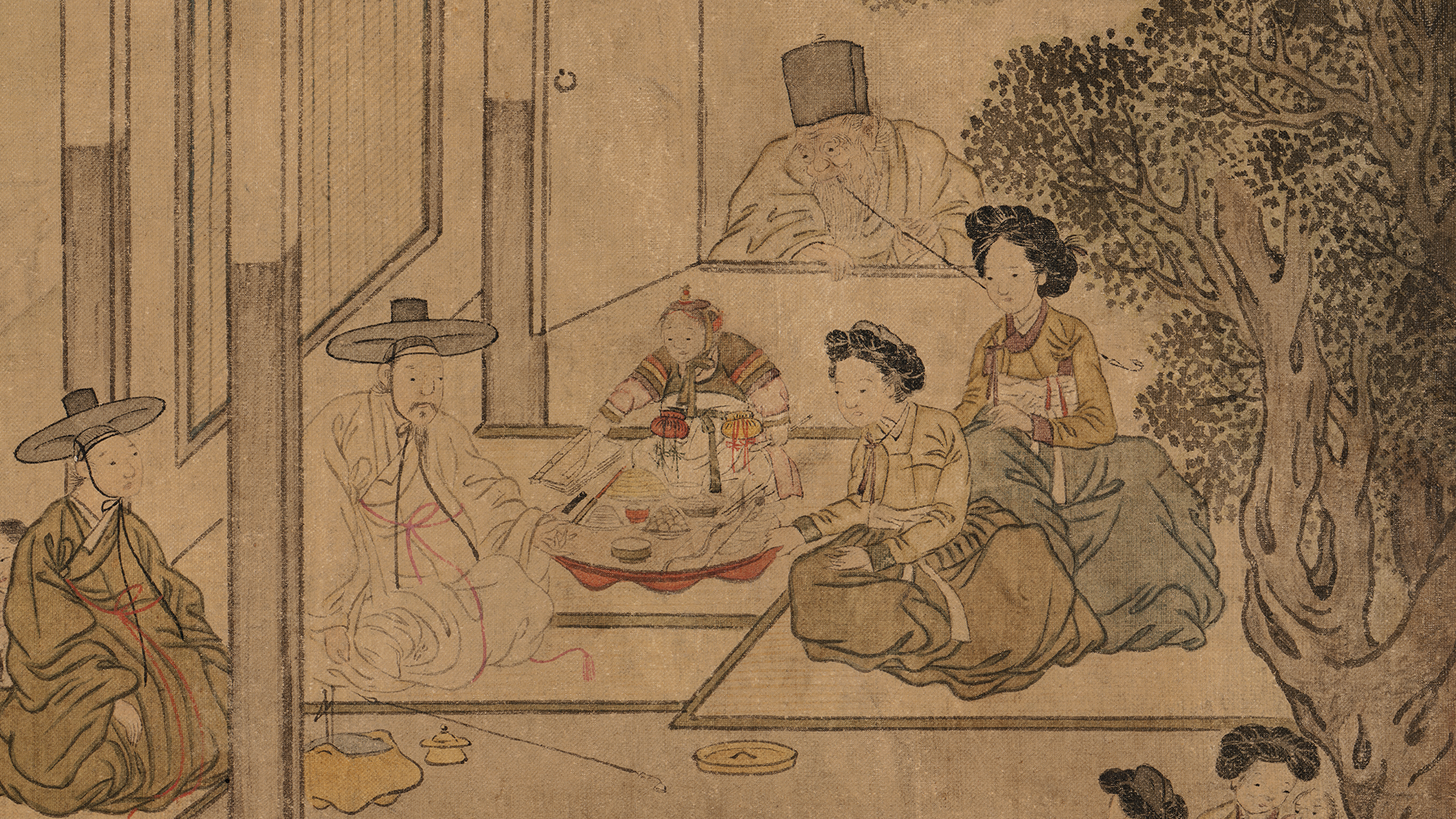
Meanings of the items on the birthday table
- Plain white rice cake: clean and pure mind
- Half-moon shaped rice cake and rice: abundance of food
- Fruits including jujubes: fecundity
- Thread or noodle: longevity
- Money: Affluence
- Book, brush, ink stick, or inkstone: scholar or writer
- Stamp: government of official
*For boys a bow and arrow are placed to predict whether to be a general, and for girls, these items are replaced with a needle, colored paper and thread to emphasize the virtues of women.
The boy wears the first birthday celebration attire in five colors and a sash with twelve small pouches containing various grains. The birthday table is round to prevent a child who is not yet capable of walking from being injured. A series of items* wishing for the child's fortune are spread out on the birthday table and the baby is encouraged to choose from them to foretell the child's dispositions and tendencies from his or her first selection.
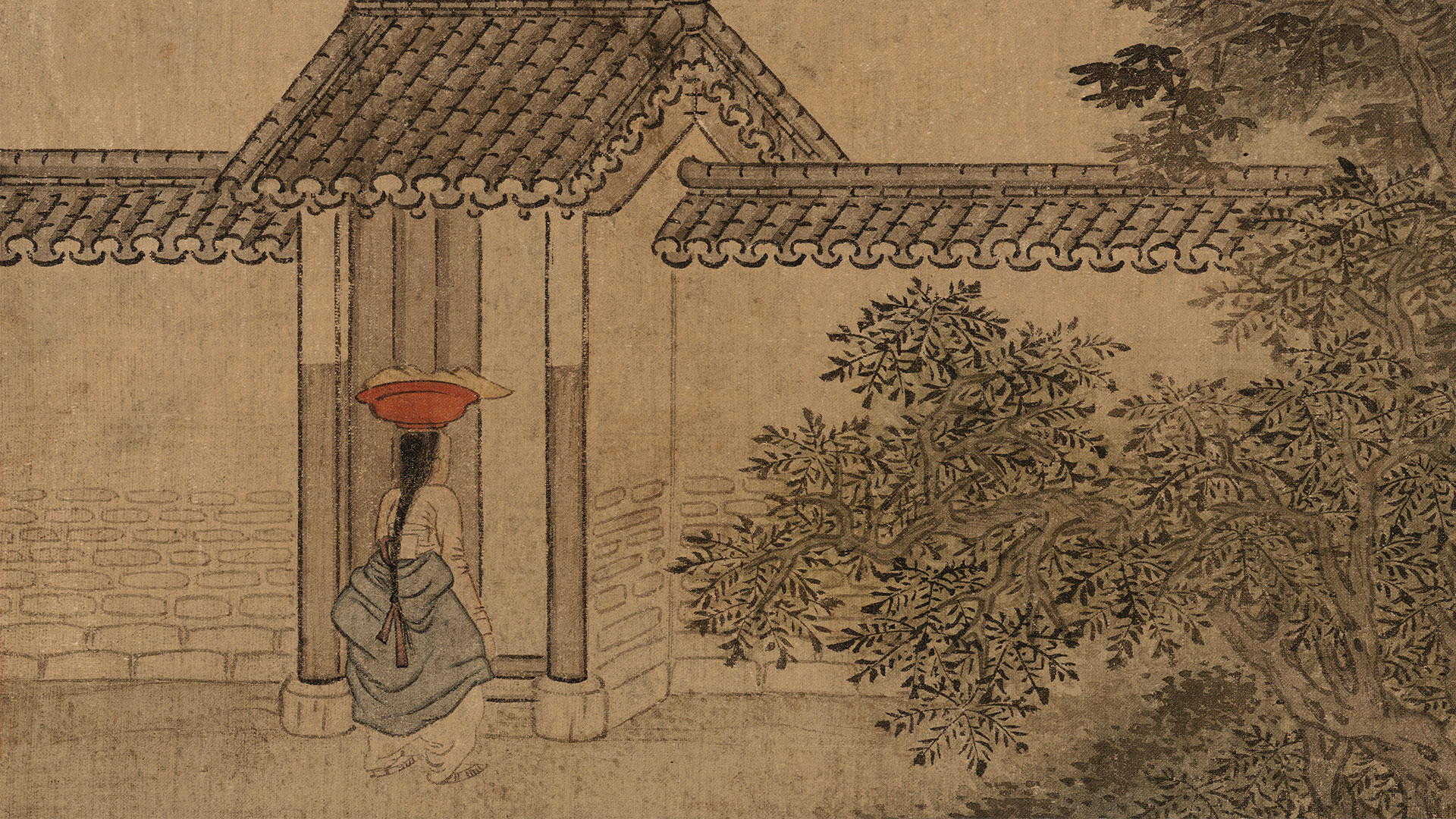
Meanings of the items on the birthday table
- Plain white rice cake: clean and pure mind
- Half-moon shaped rice cake and rice: abundance of food
- Fruits including jujubes: fecundity
- Thread or noodle: longevity
- Money: Affluence
- Book, brush, ink stick, or inkstone: scholar or writer
- Stamp: government of official
*For boys a bow and arrow are placed to predict whether to be a general, and for girls, these items are replaced with a needle, colored paper and thread to emphasize the virtues of women.
On the first birthday celebration day, the family delivers rice cake on plates or bowls to their neighbors. Those who receive the rice cake return the plates or bowls by filling them with money, rice or thread, wishing for the baby's longevity and fortune. This figure is assumed to be a female attendant coming back from delivering the rice cake to the neighbors.


